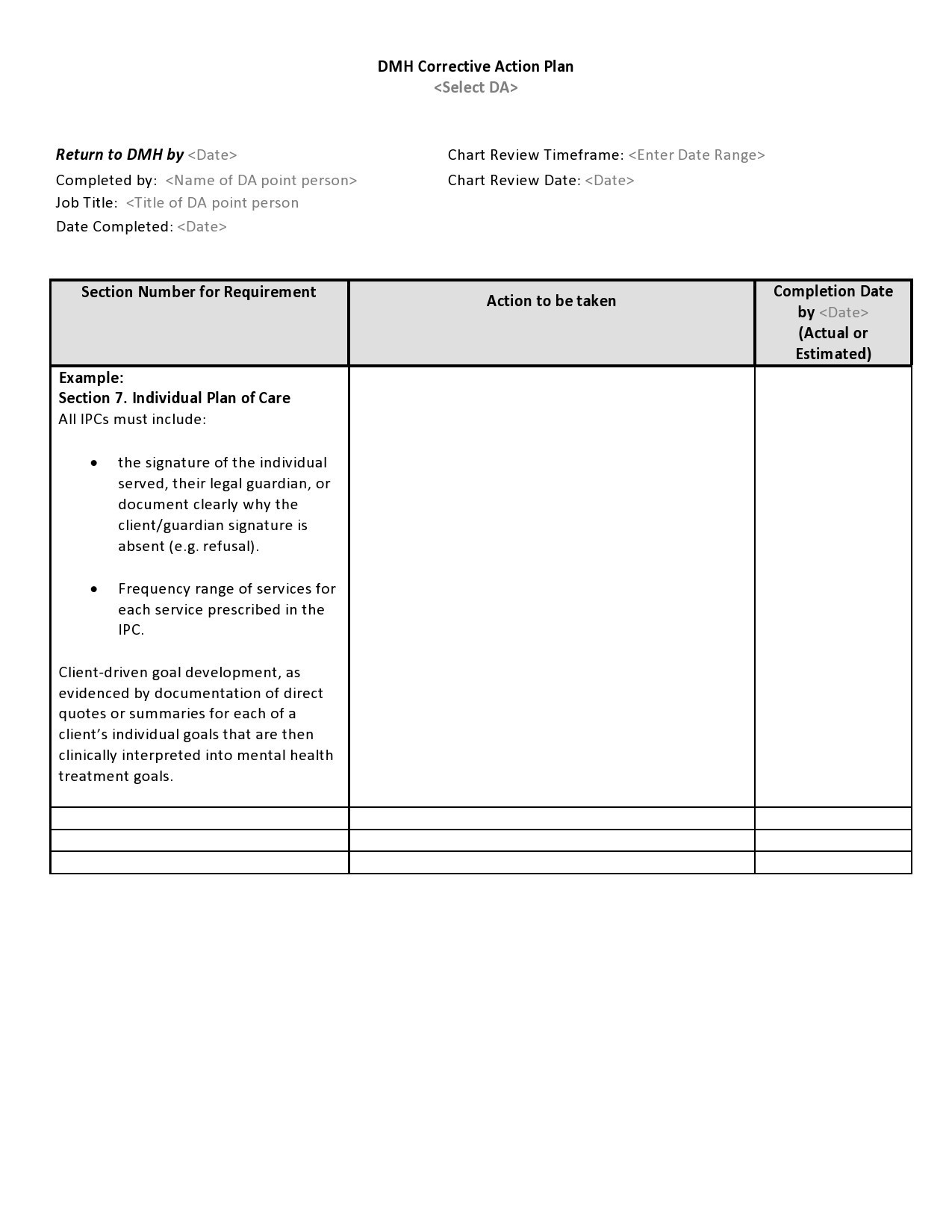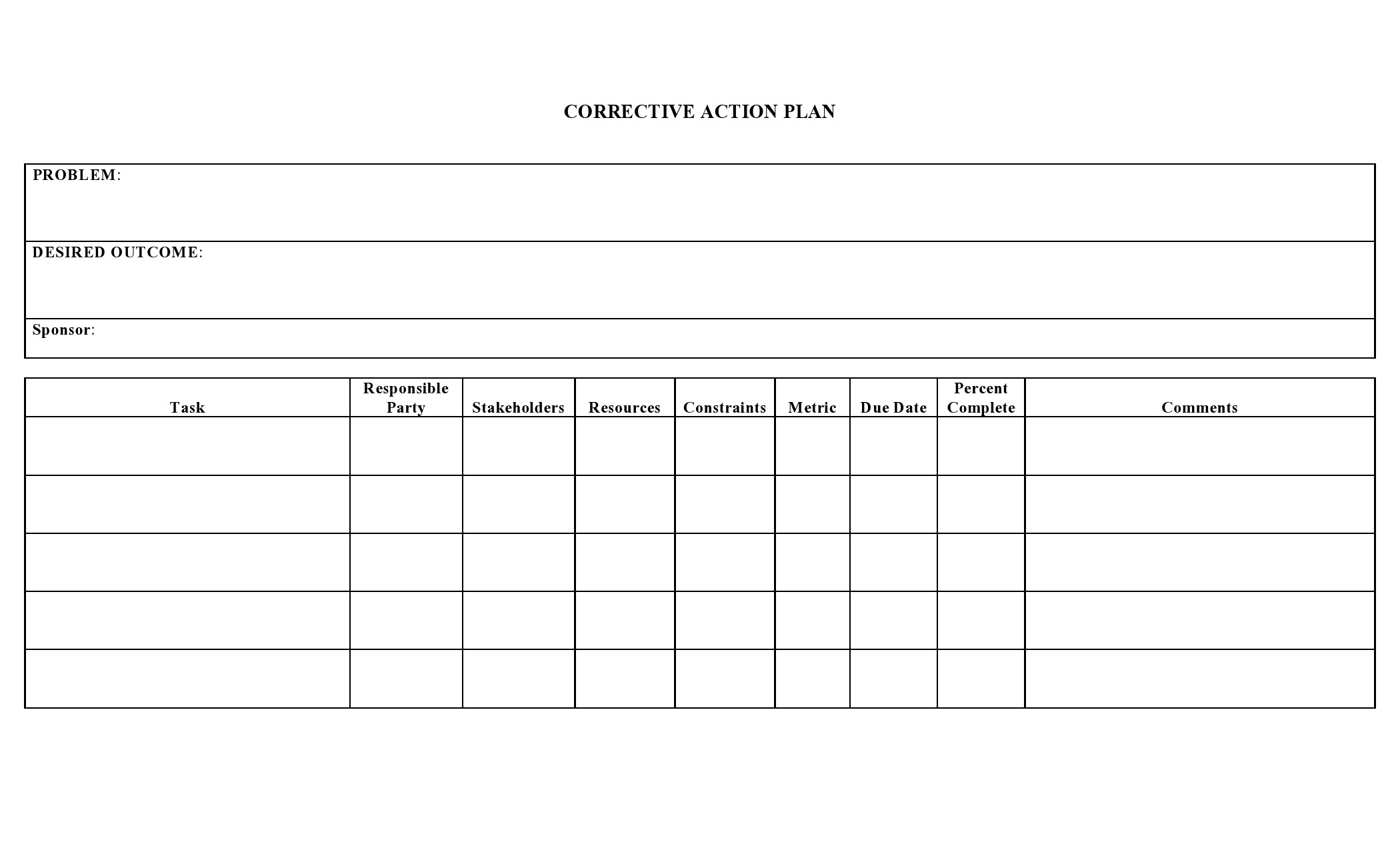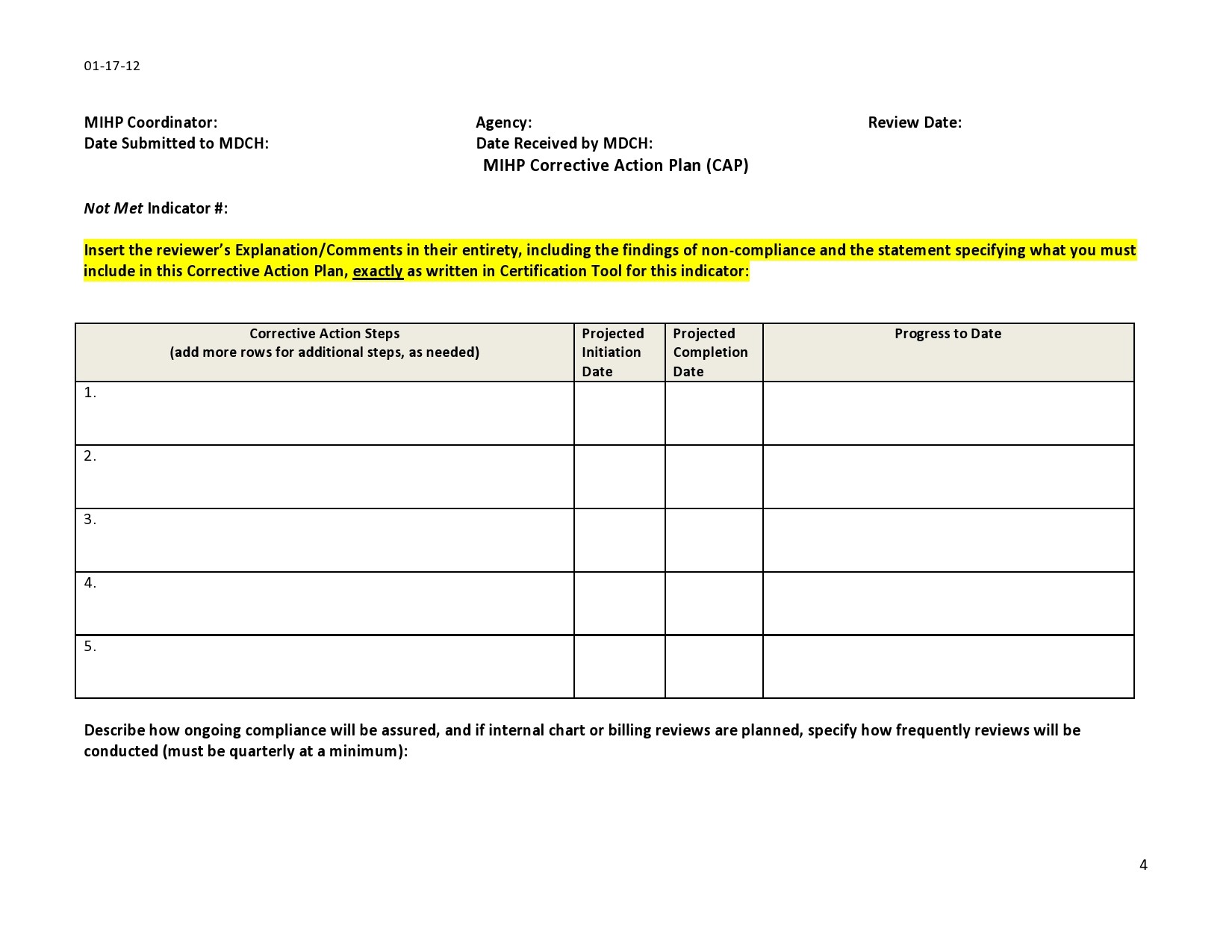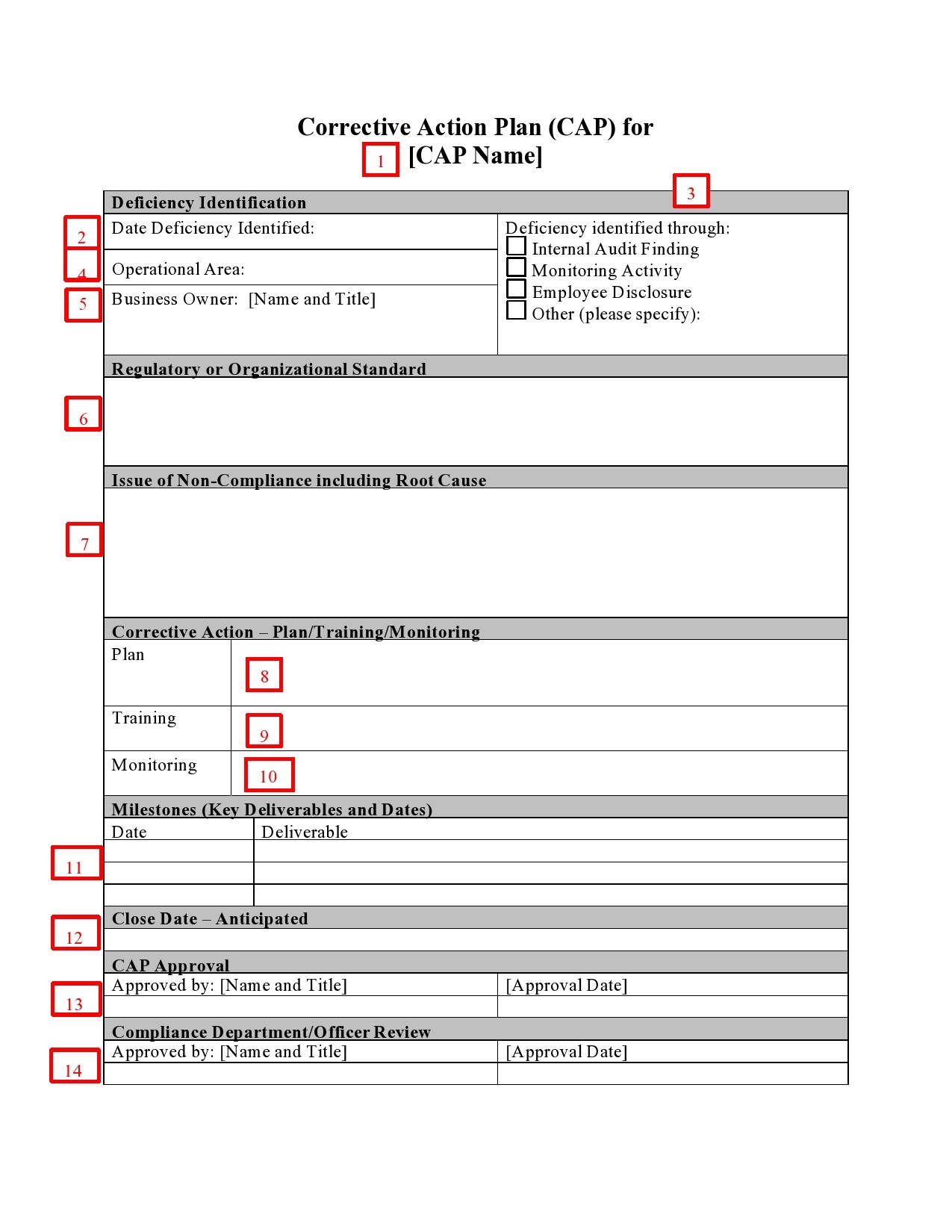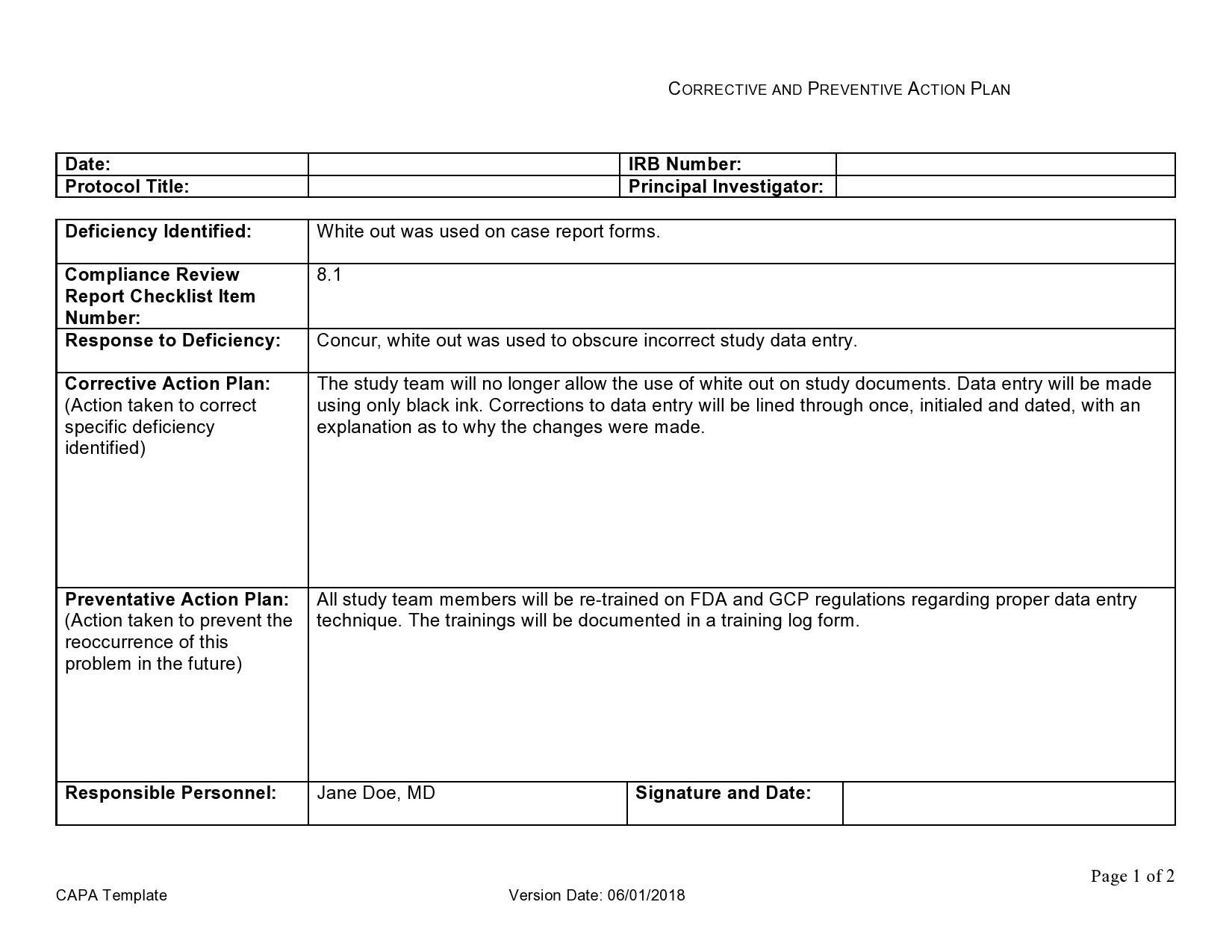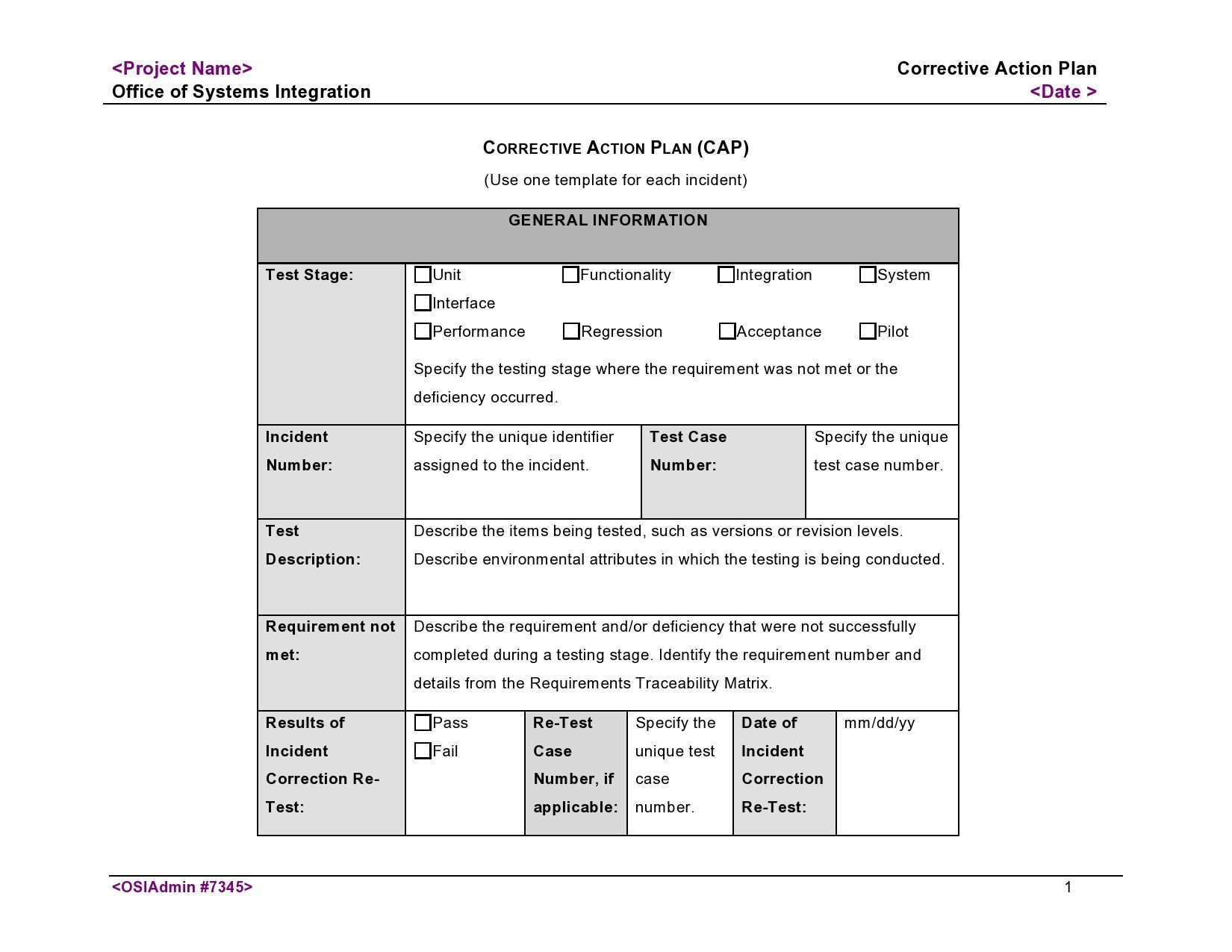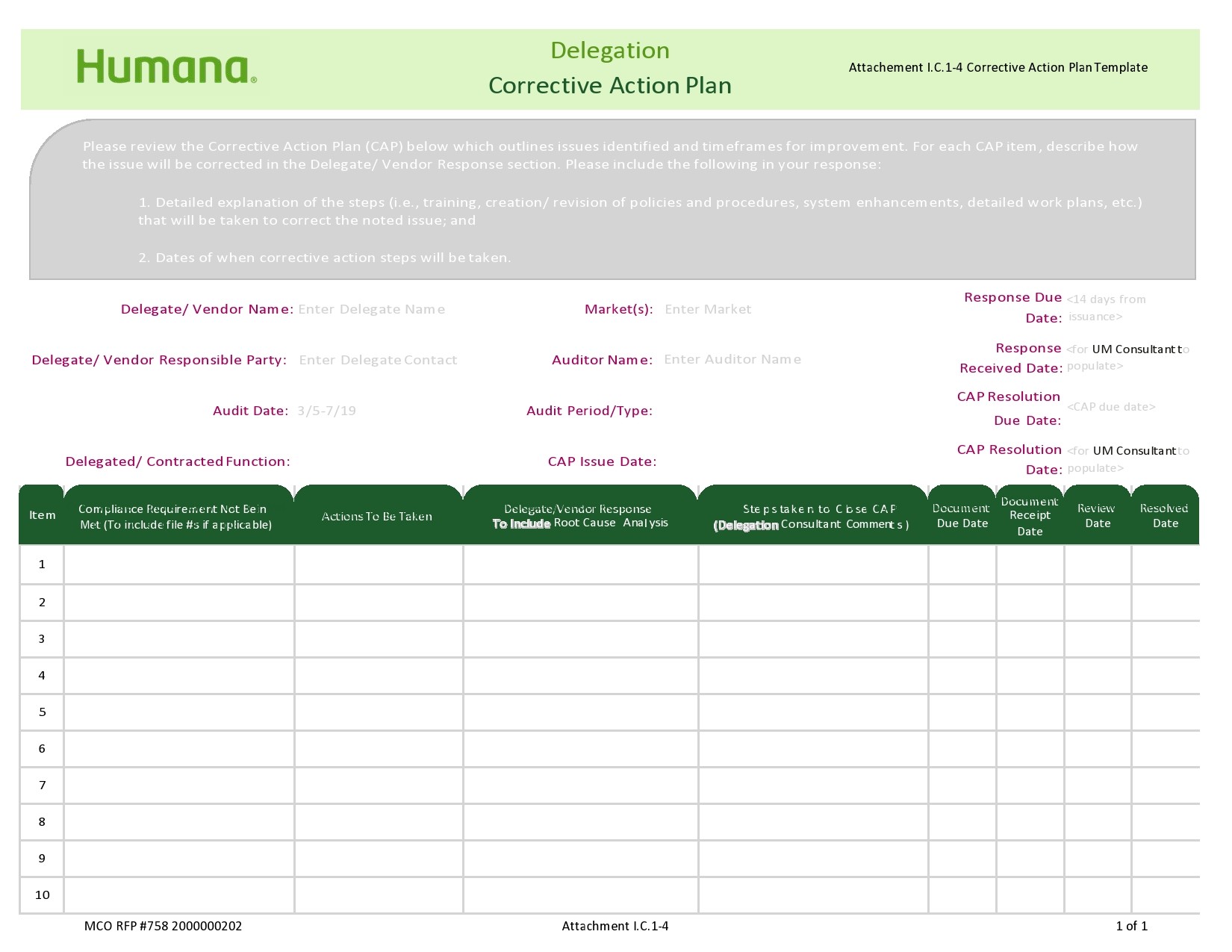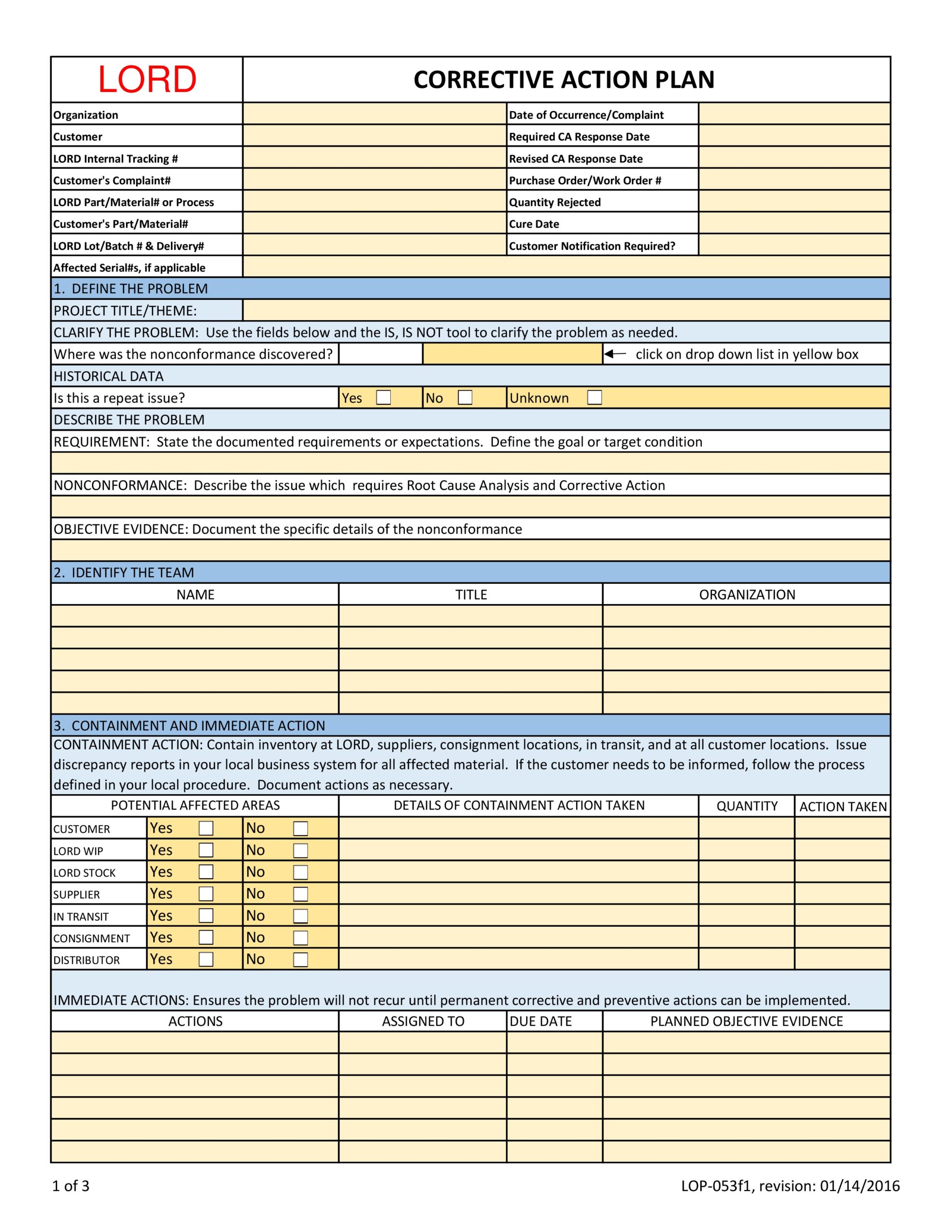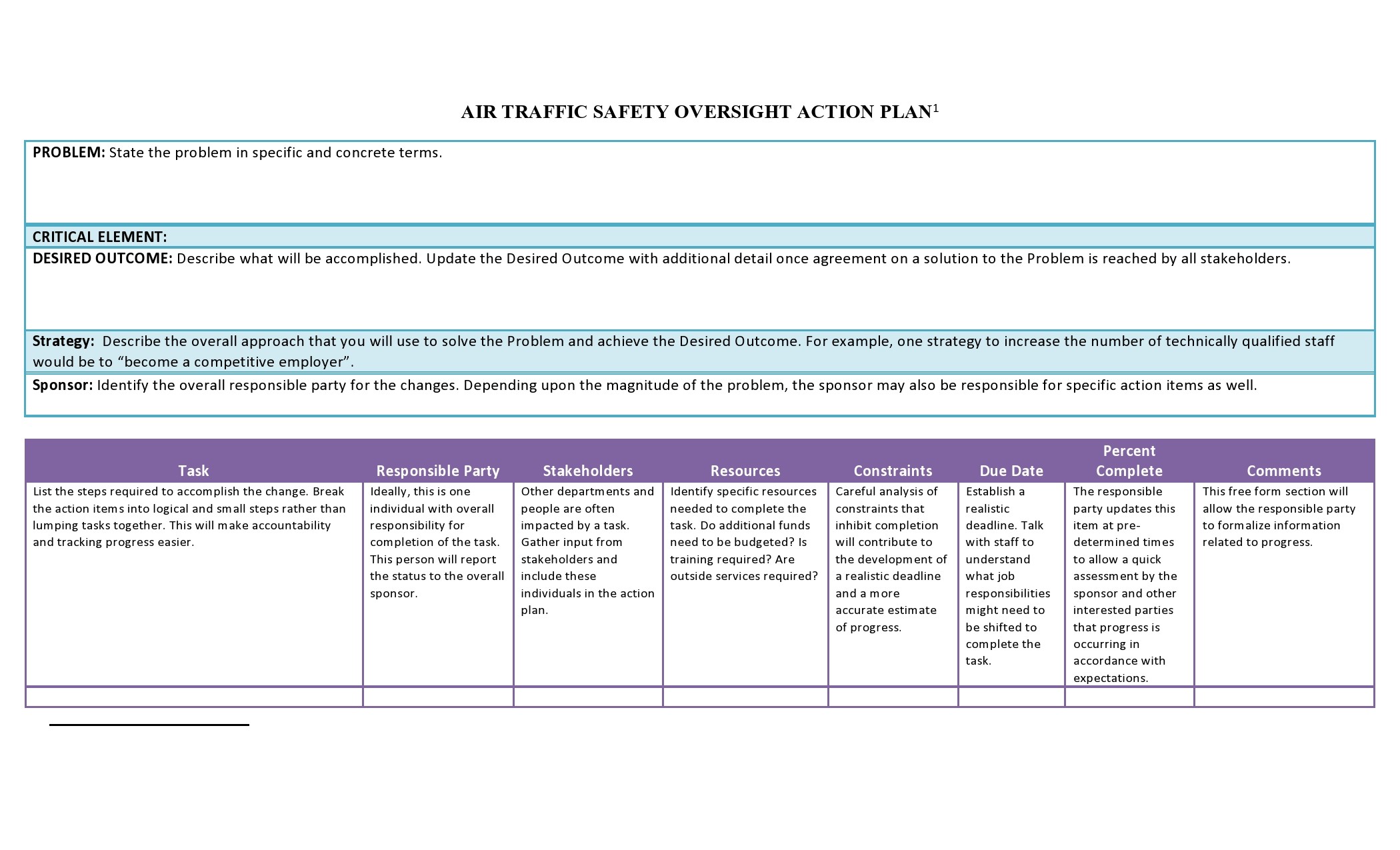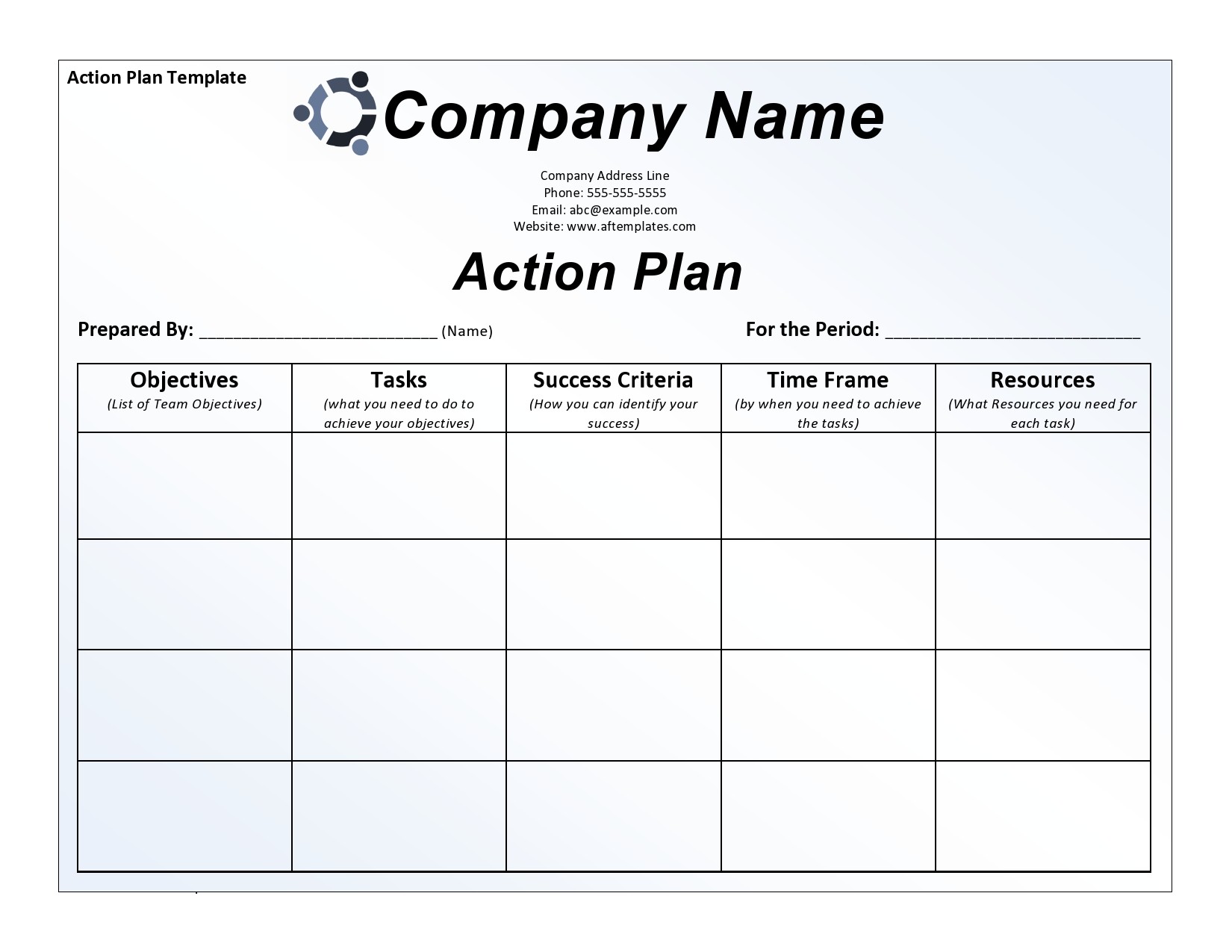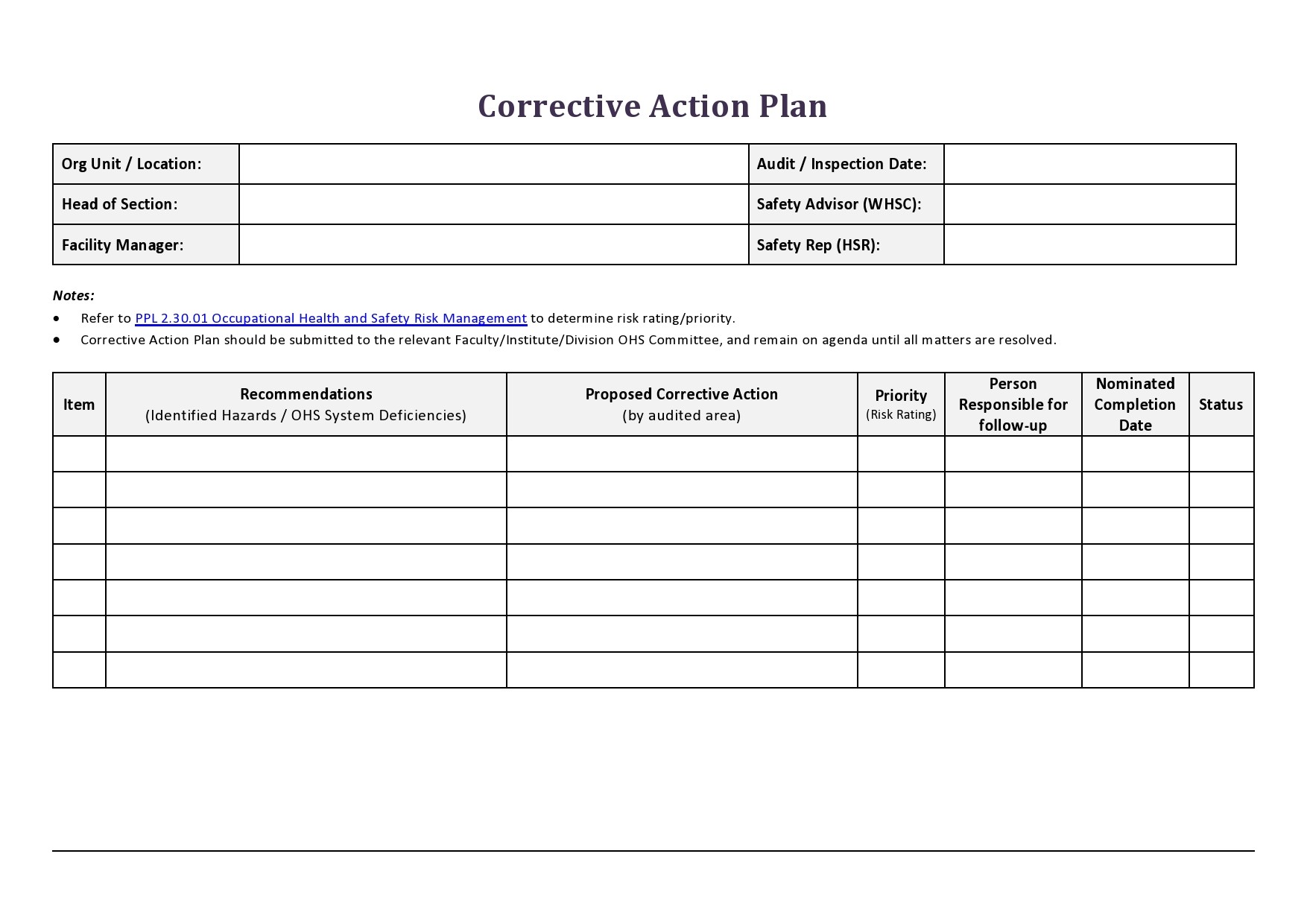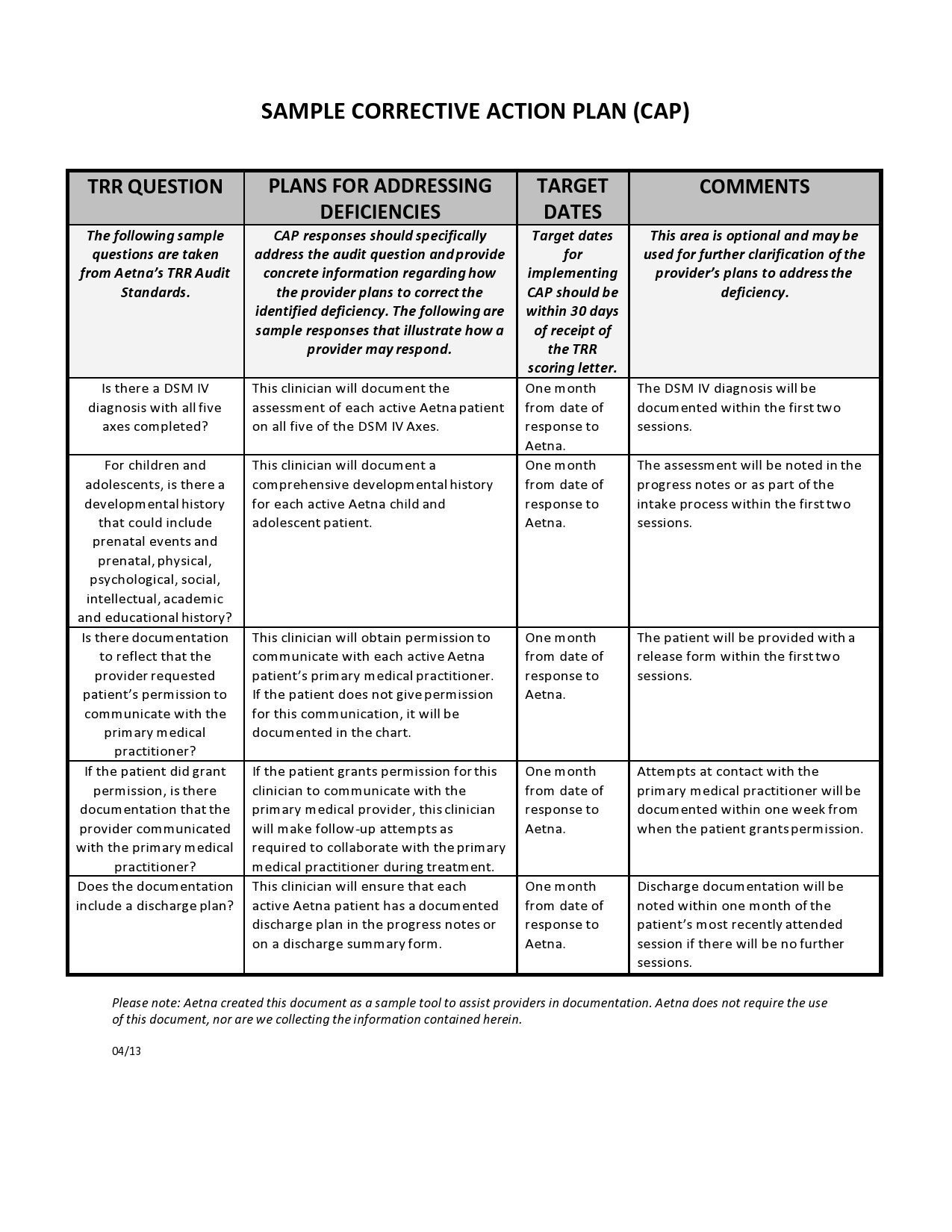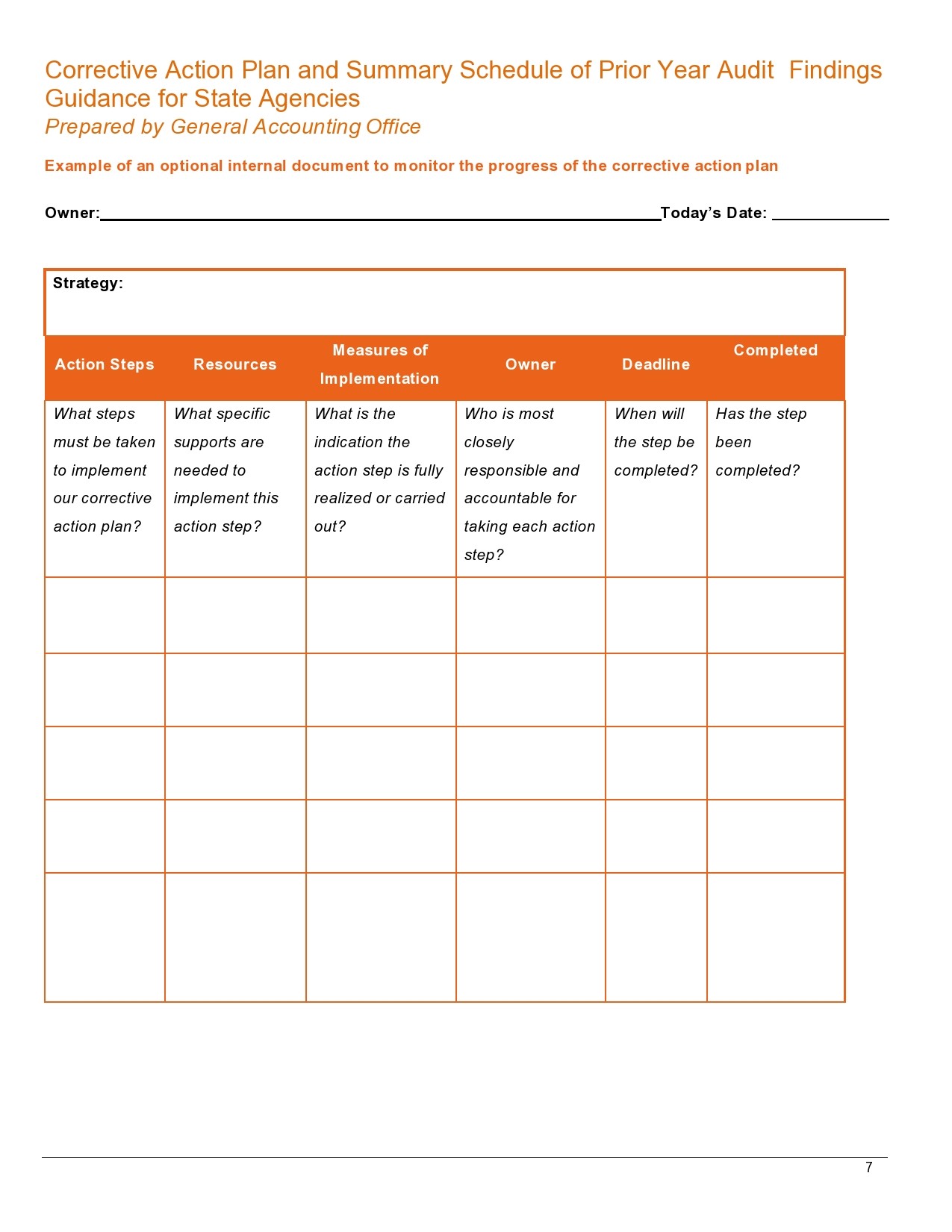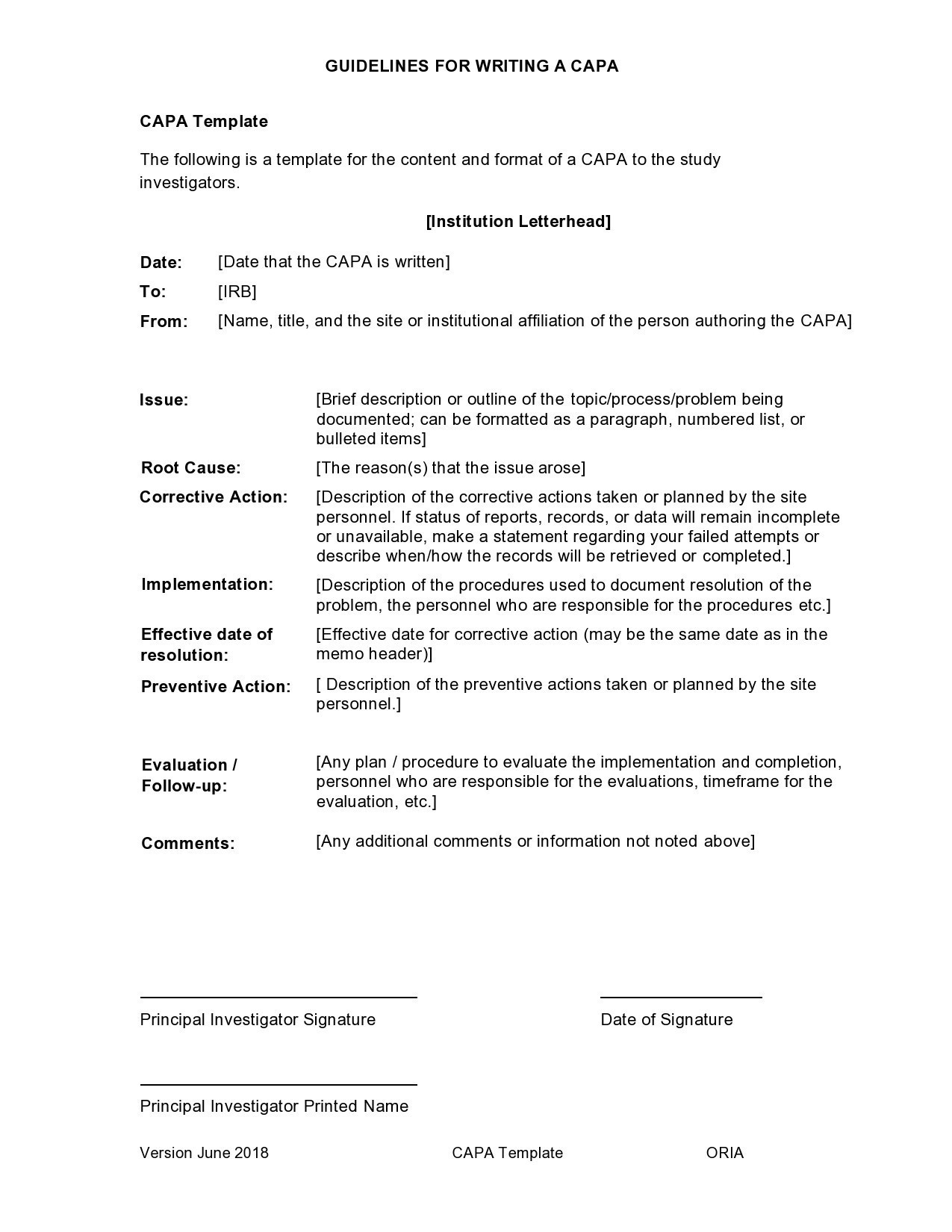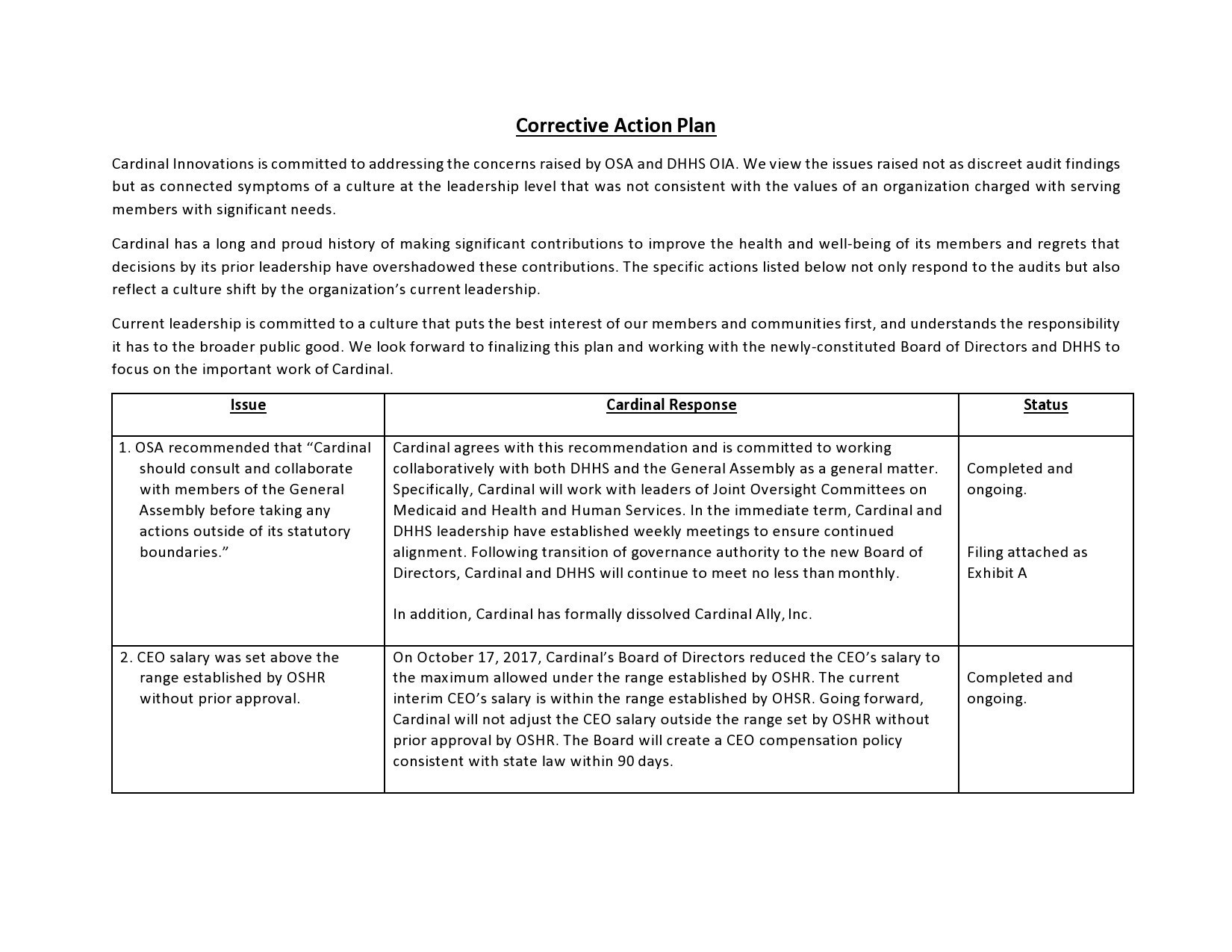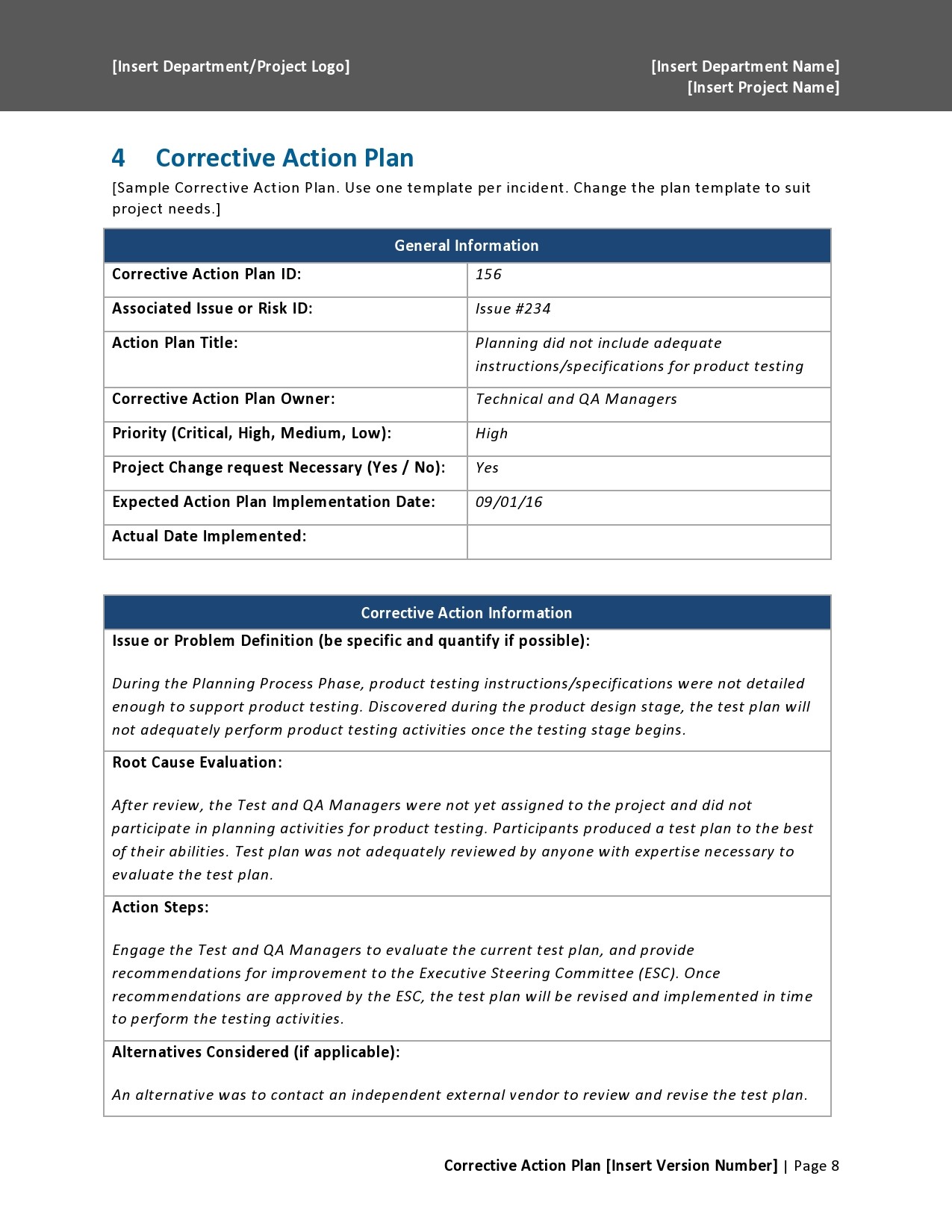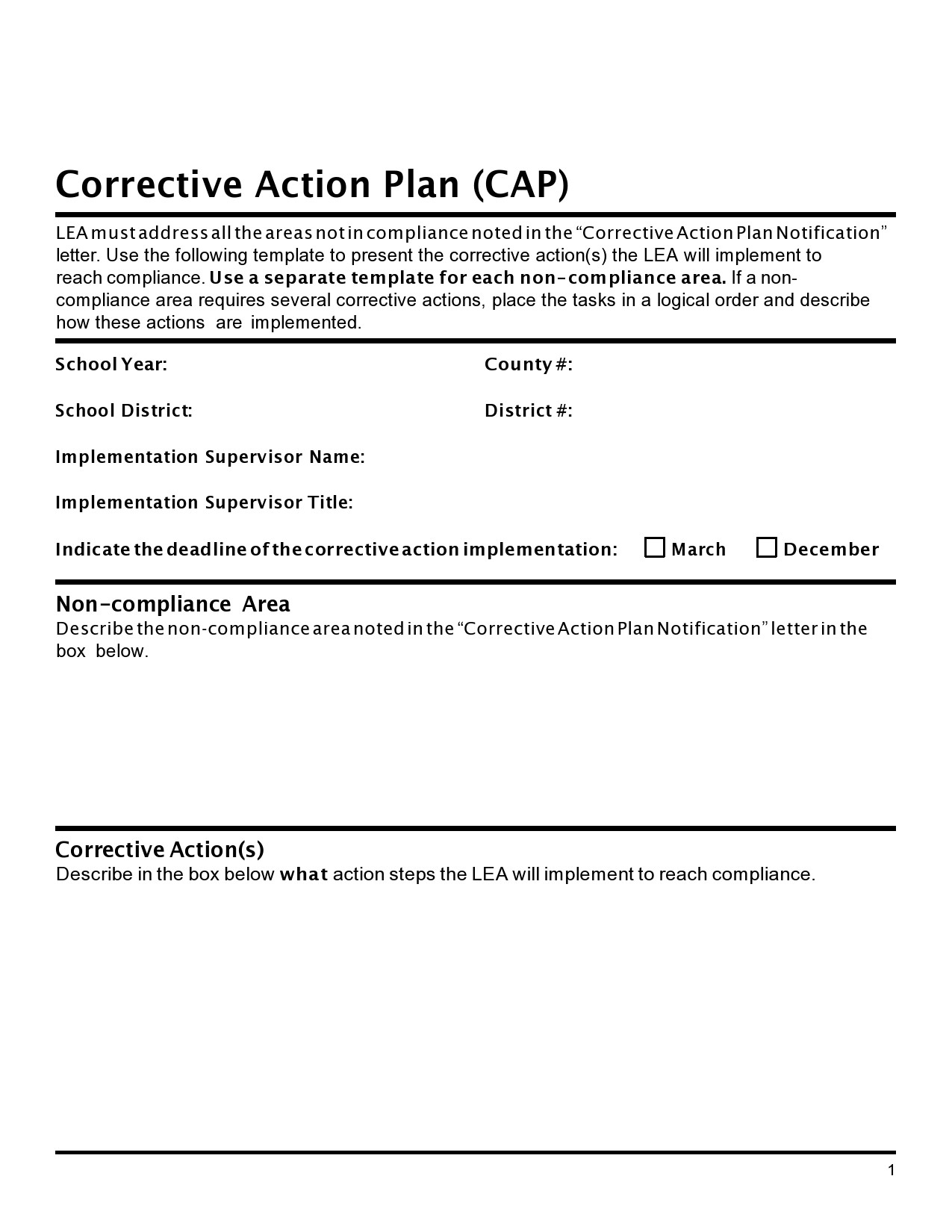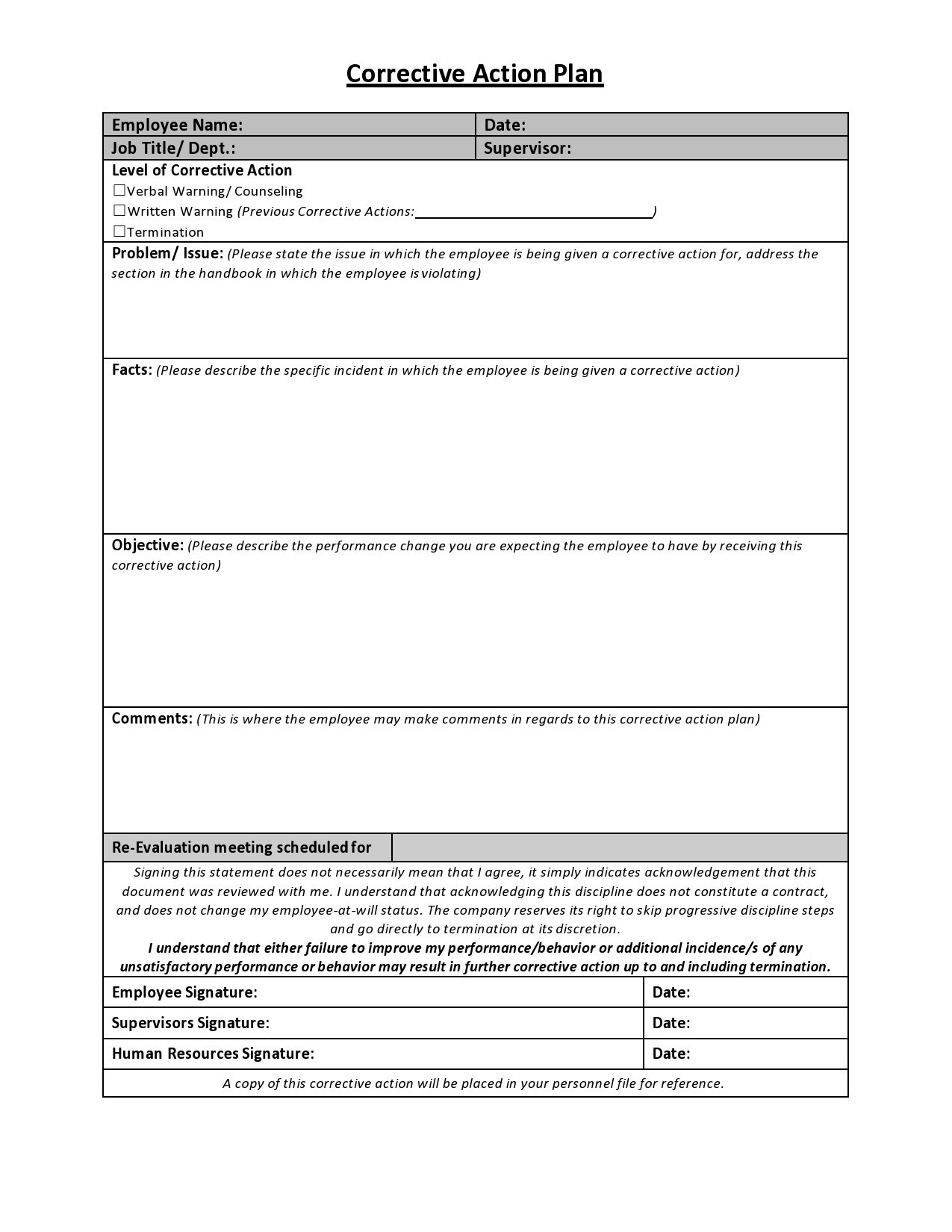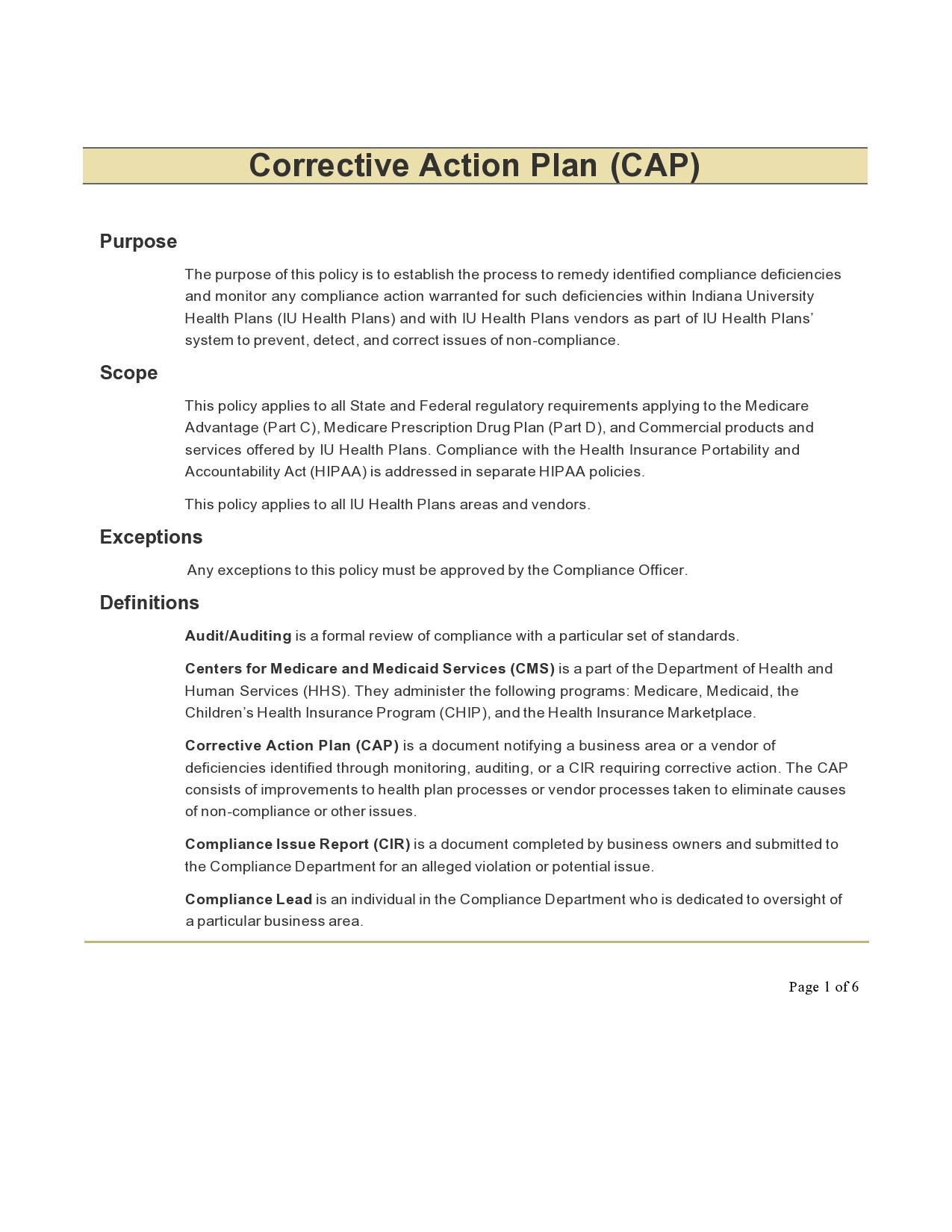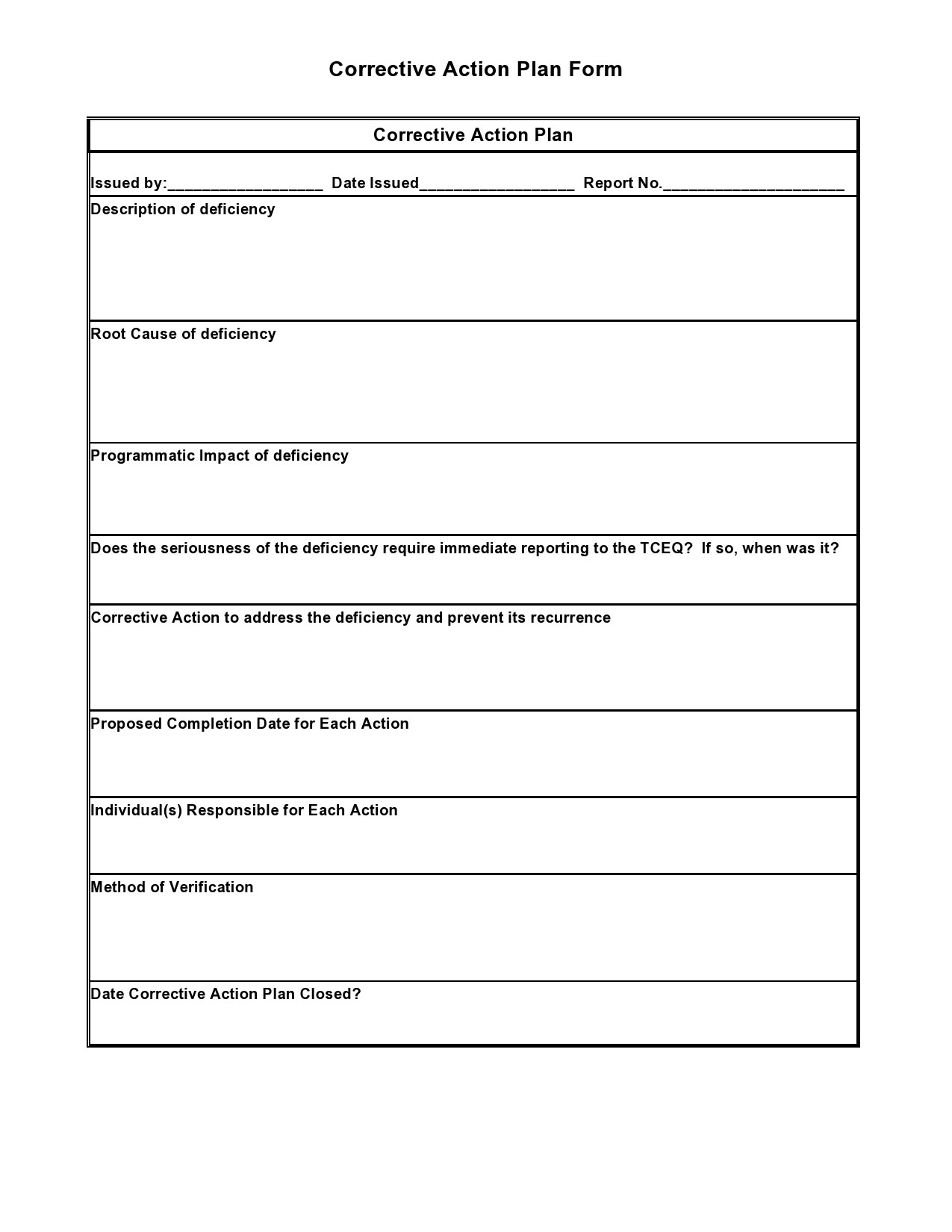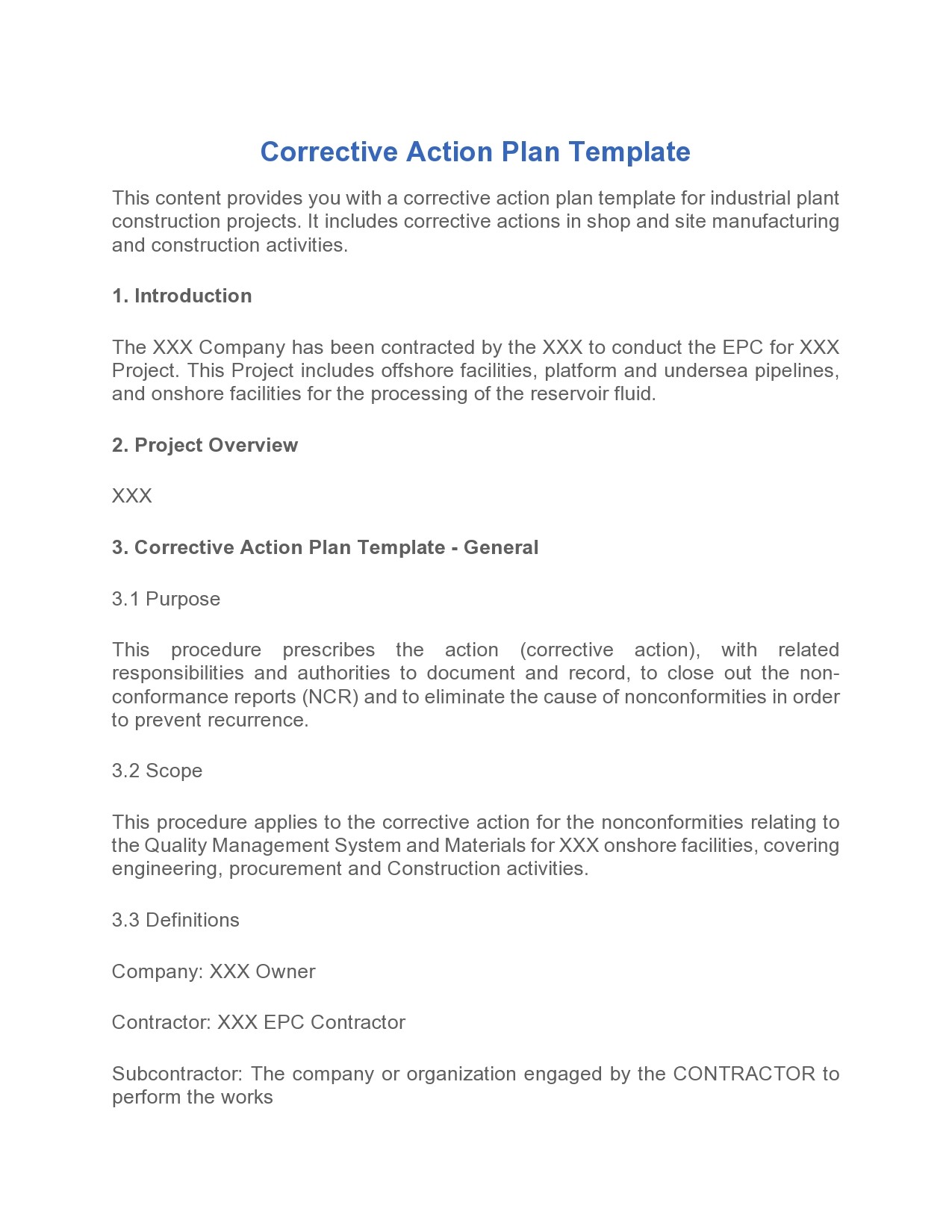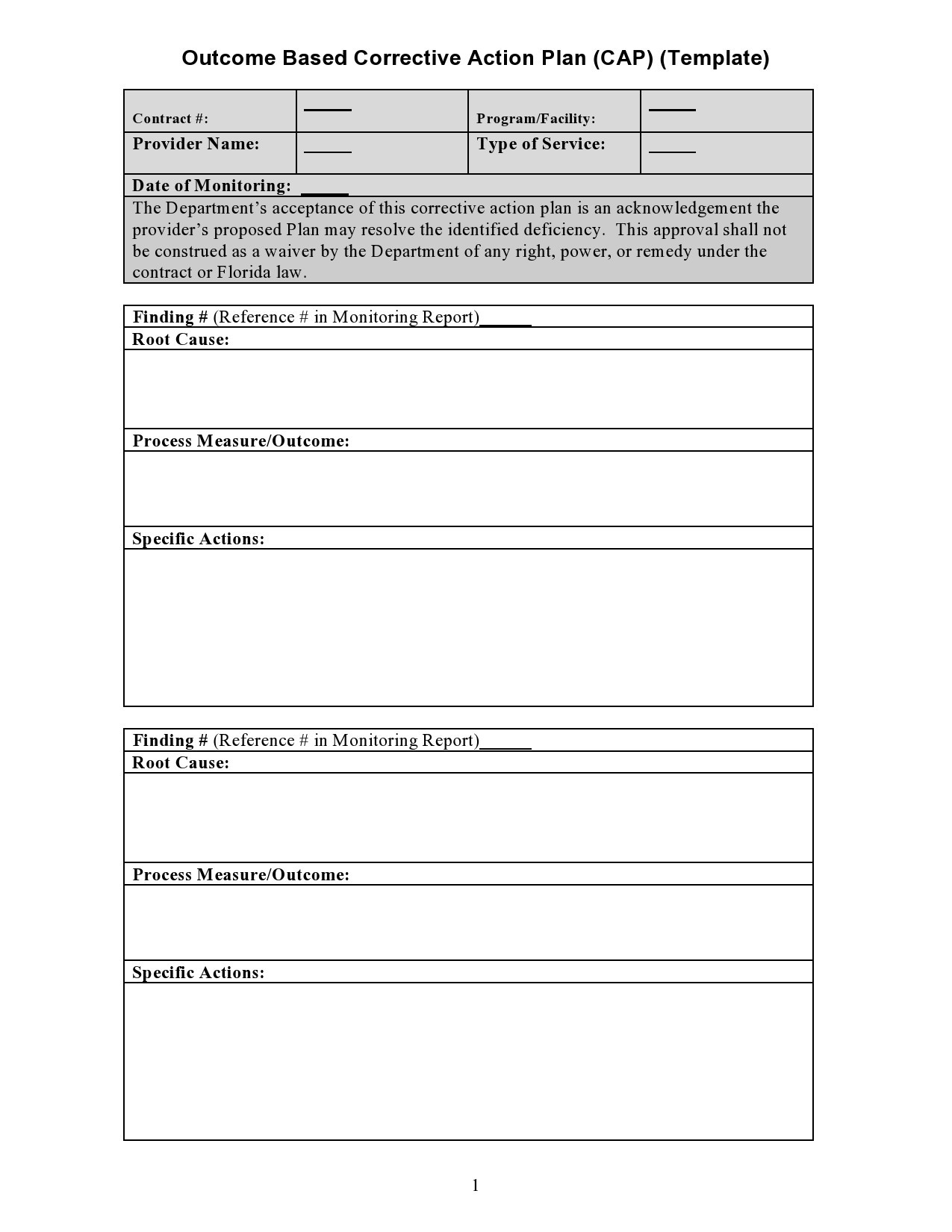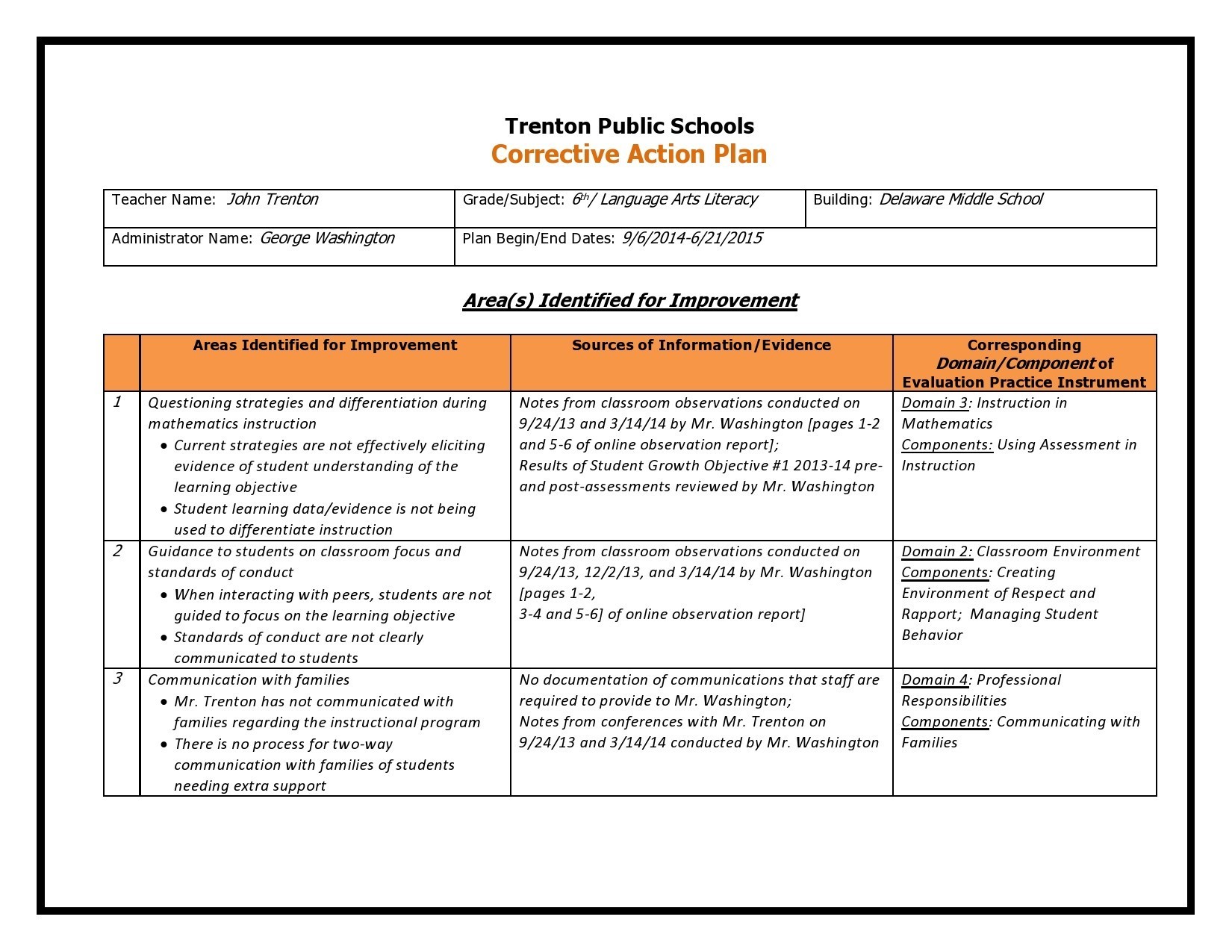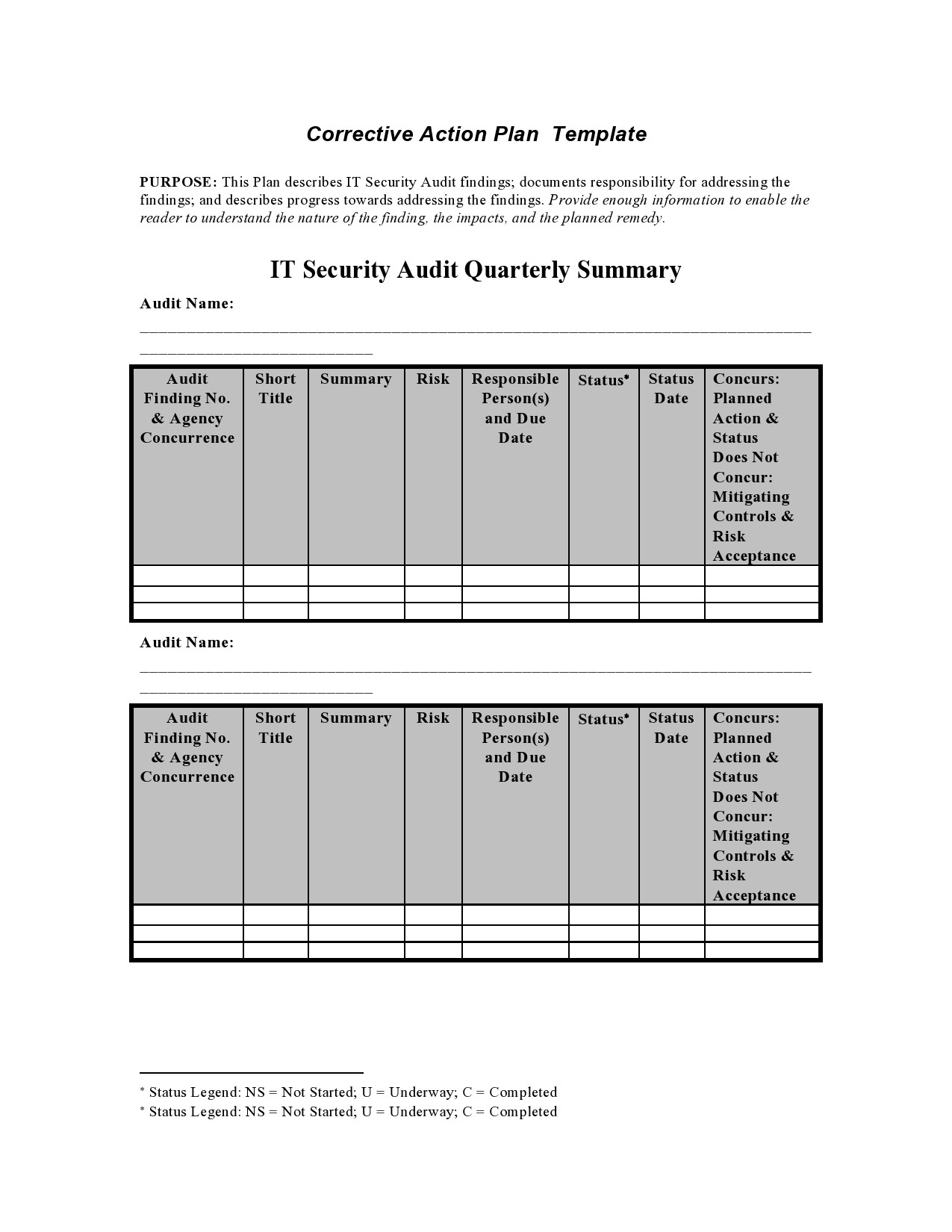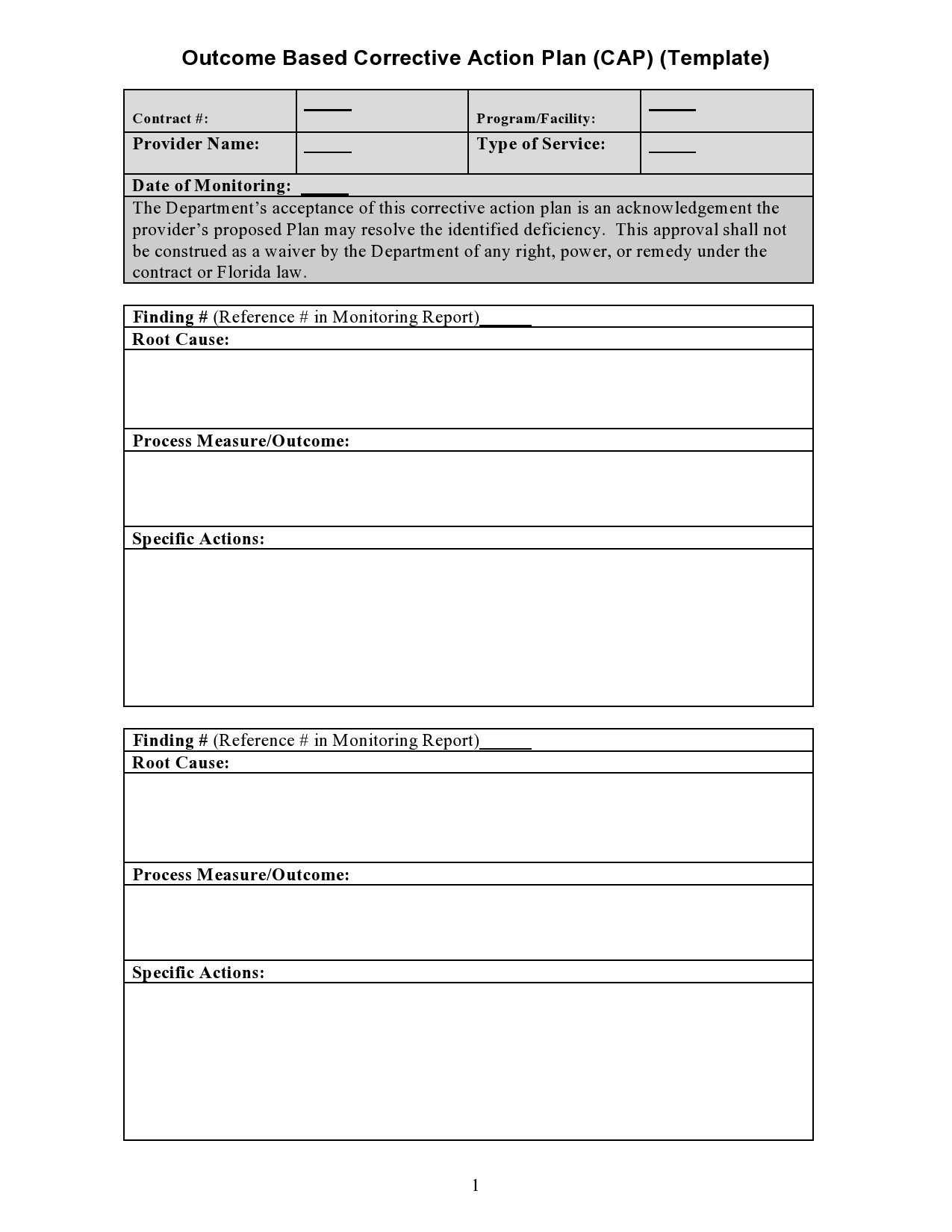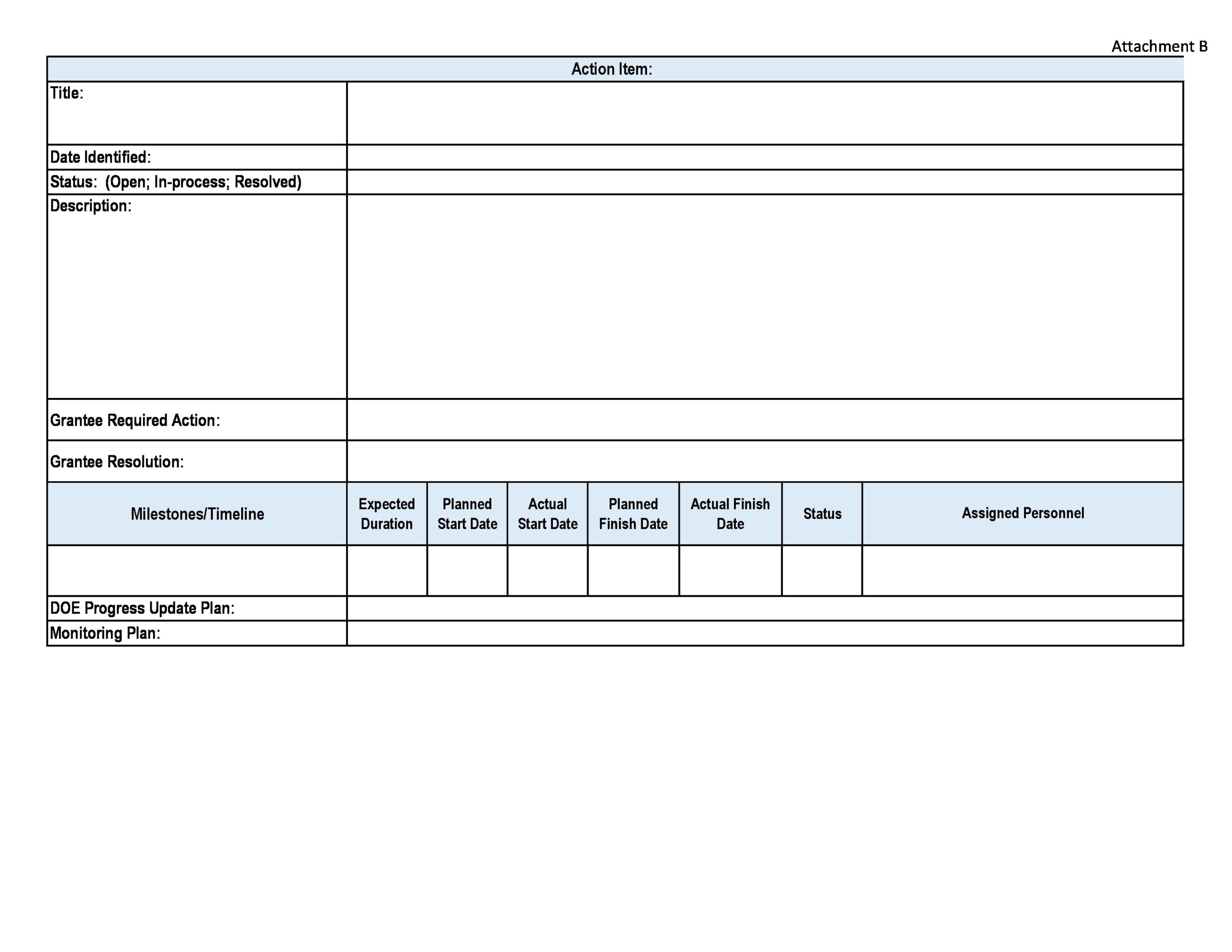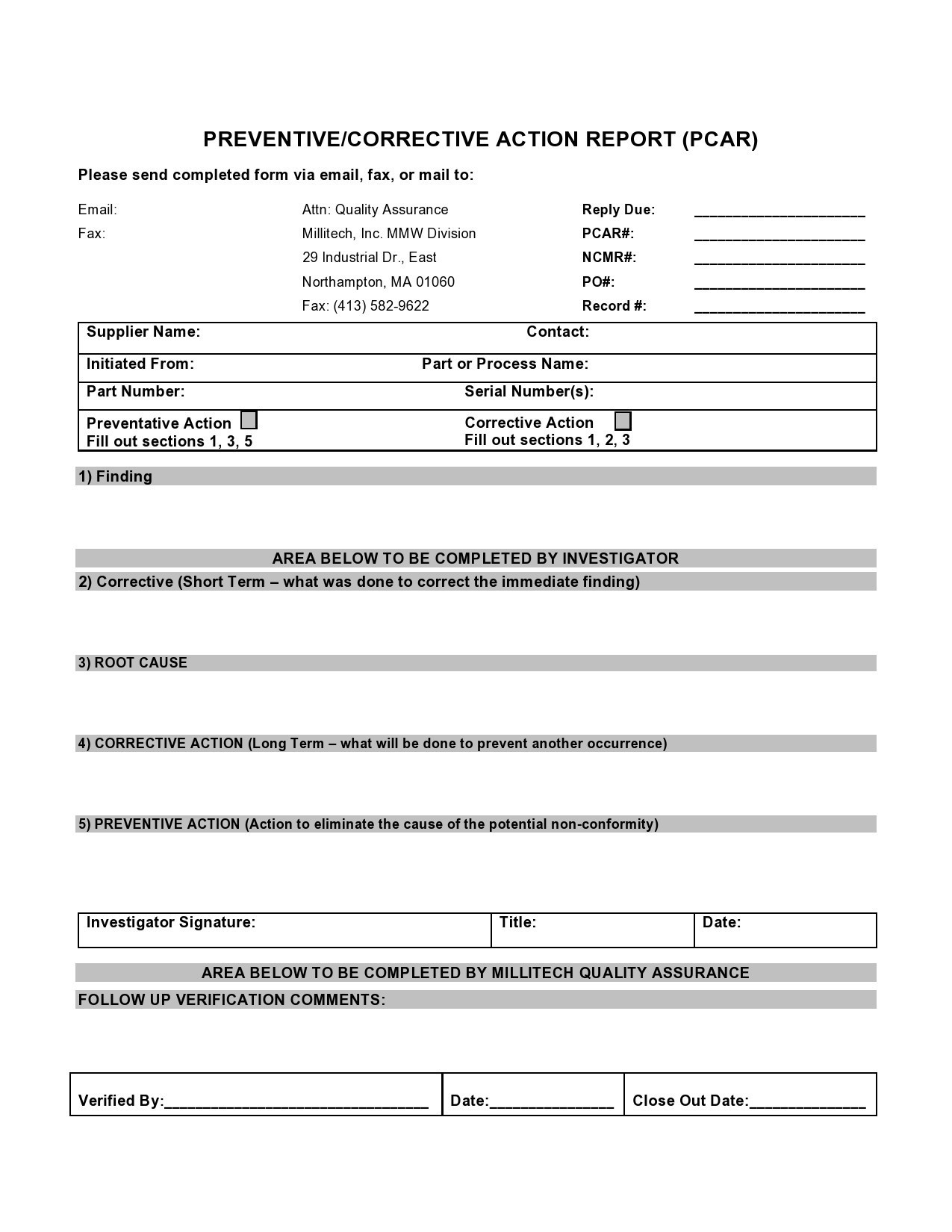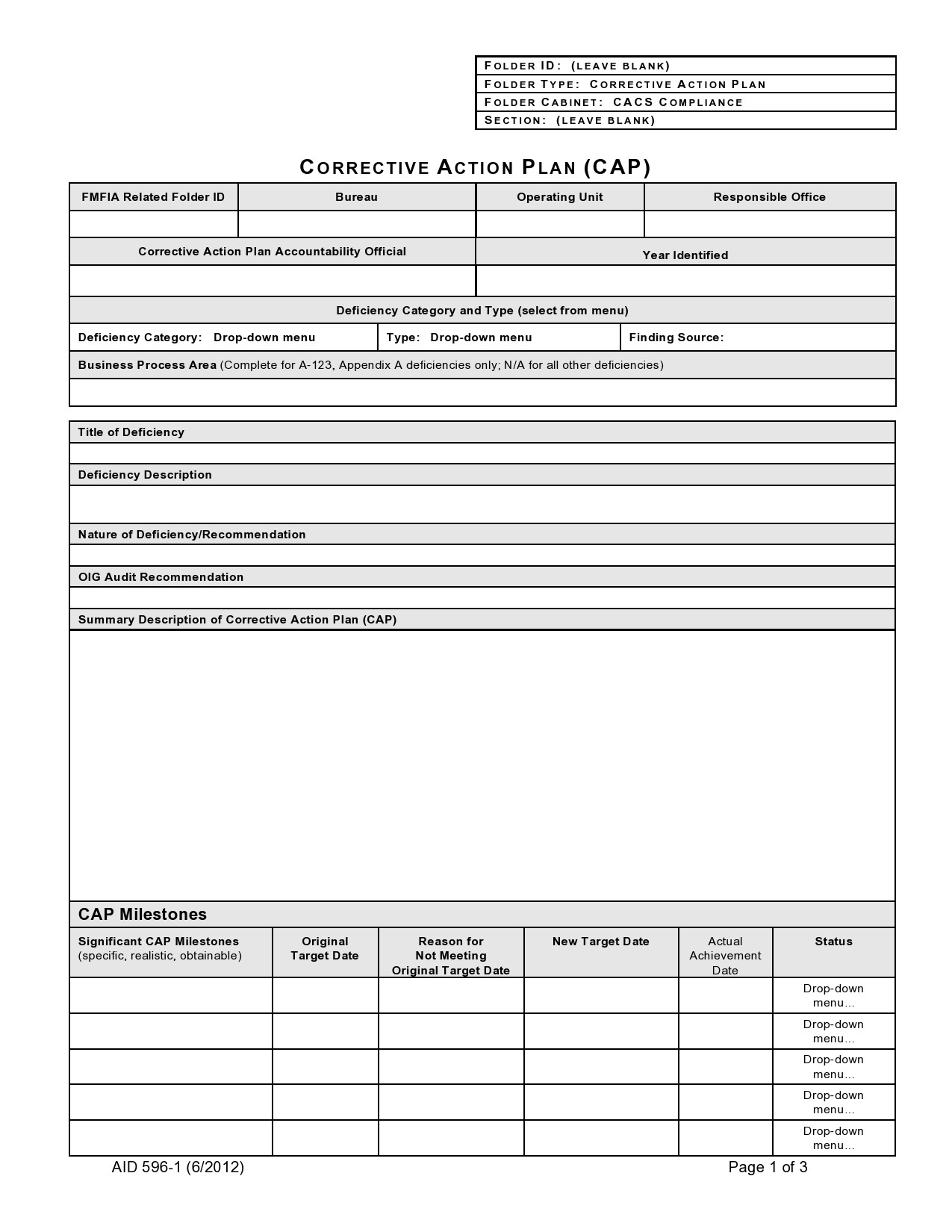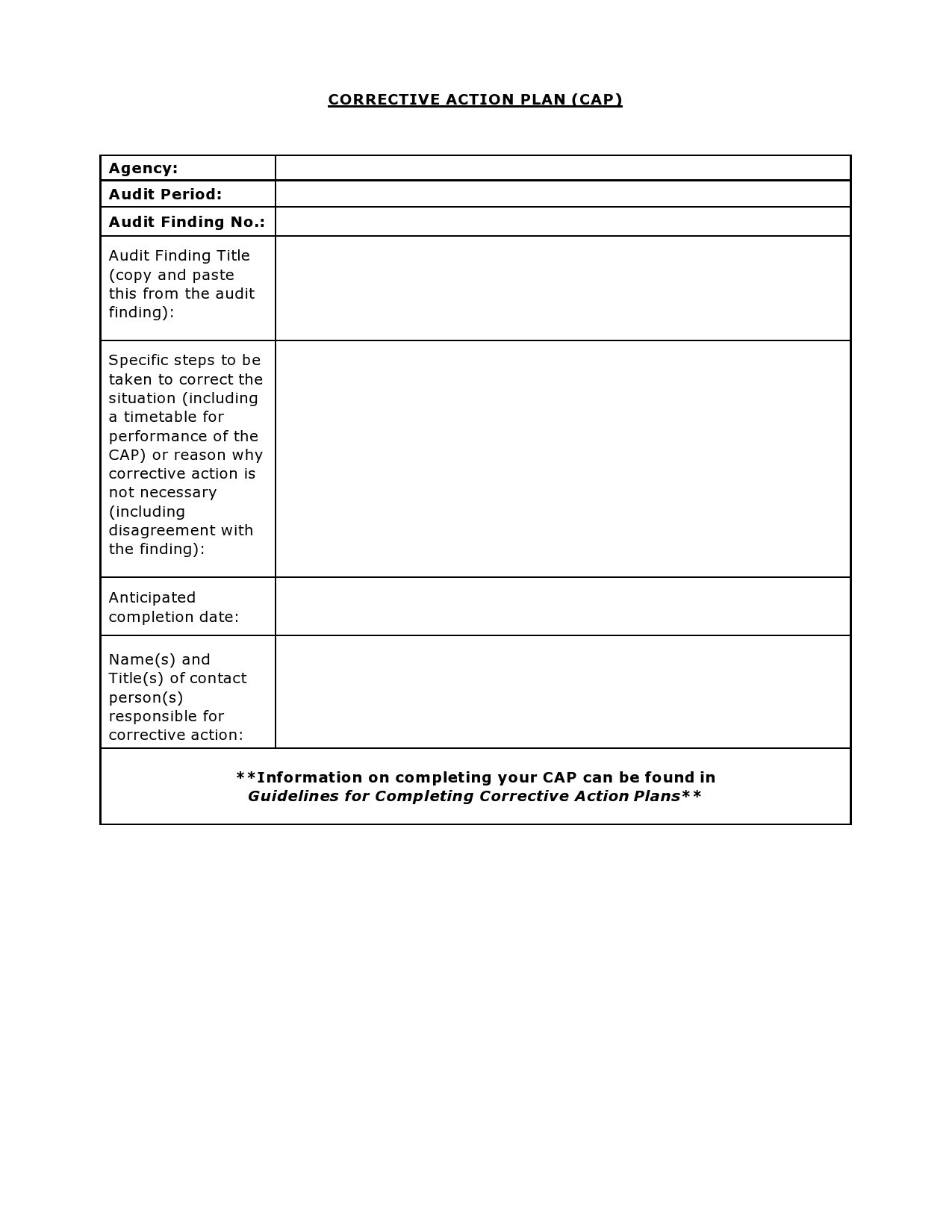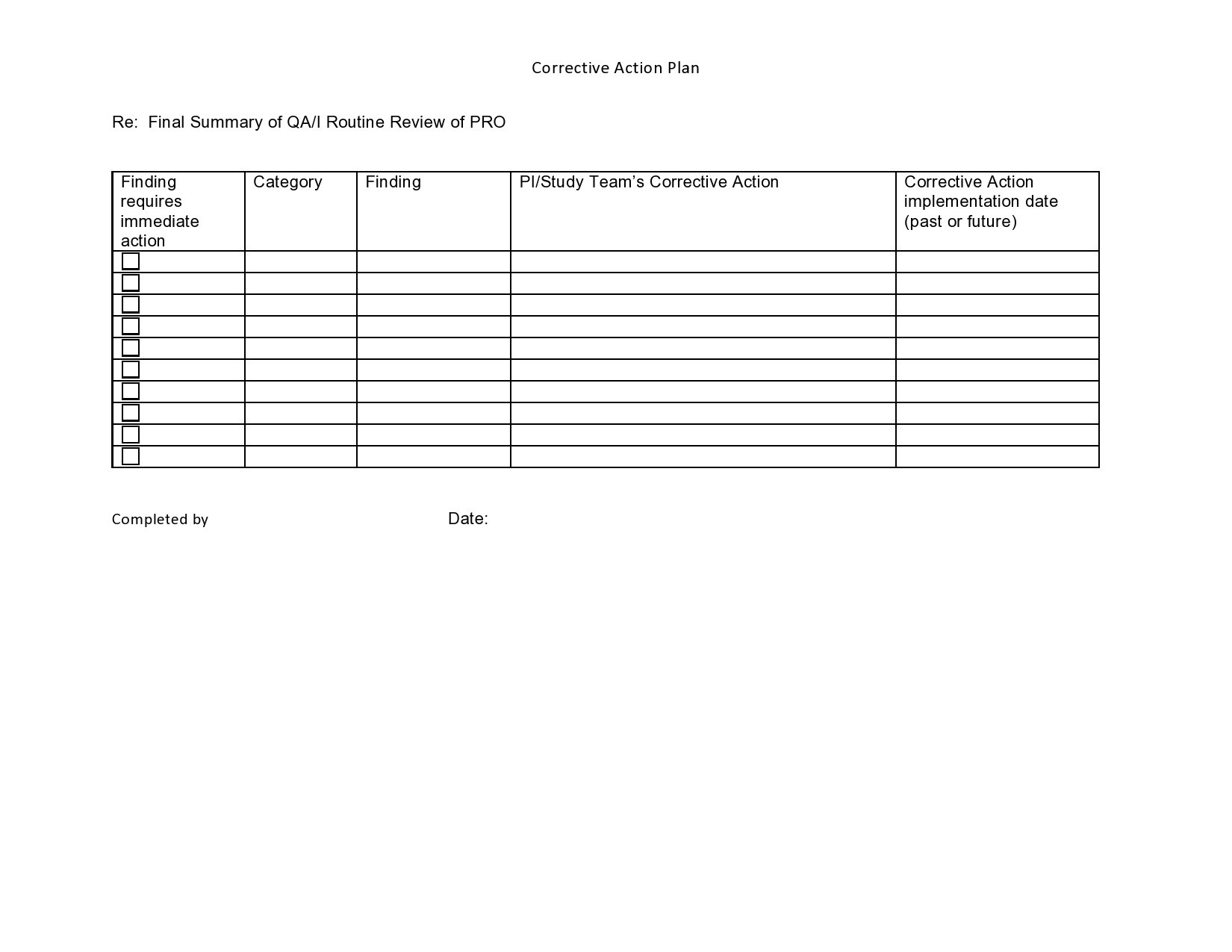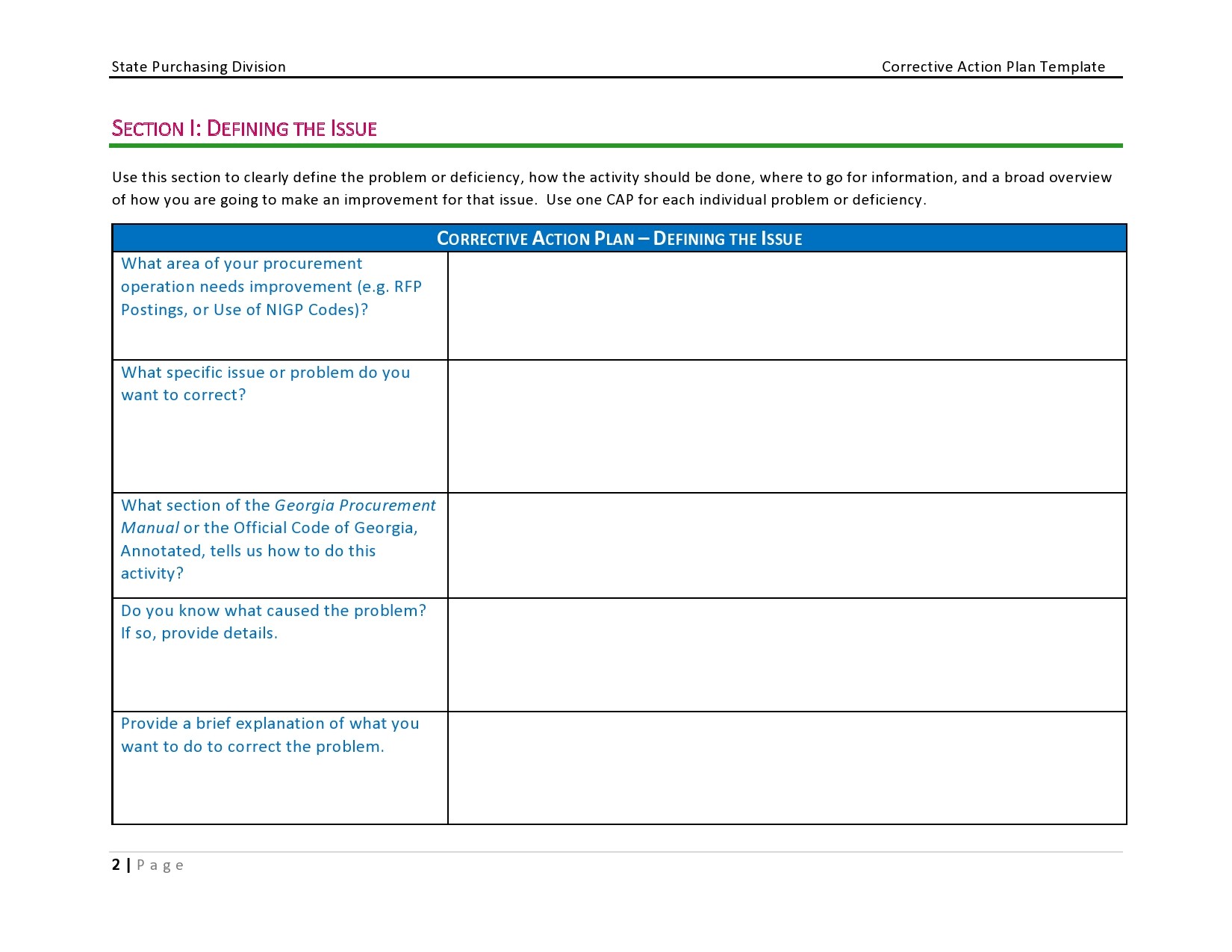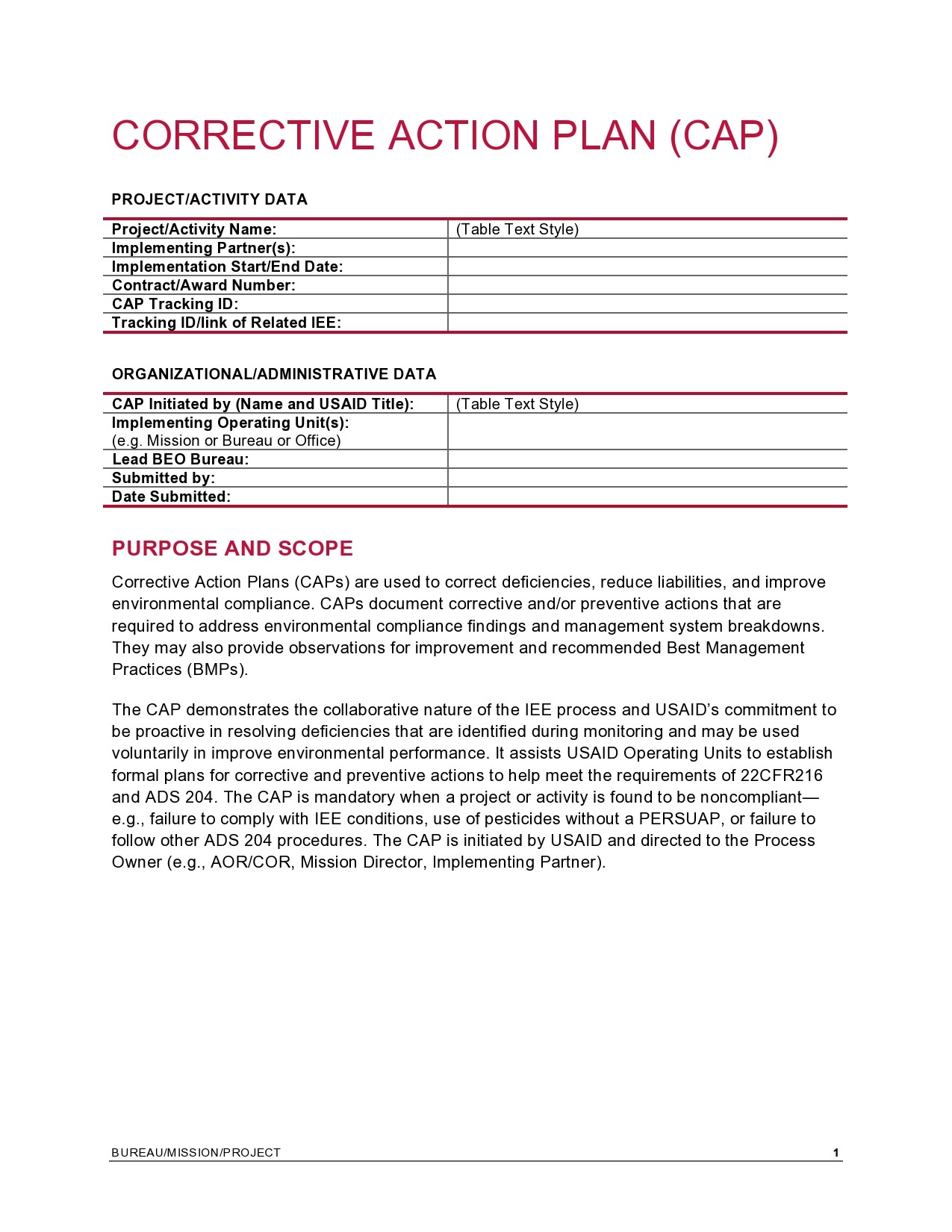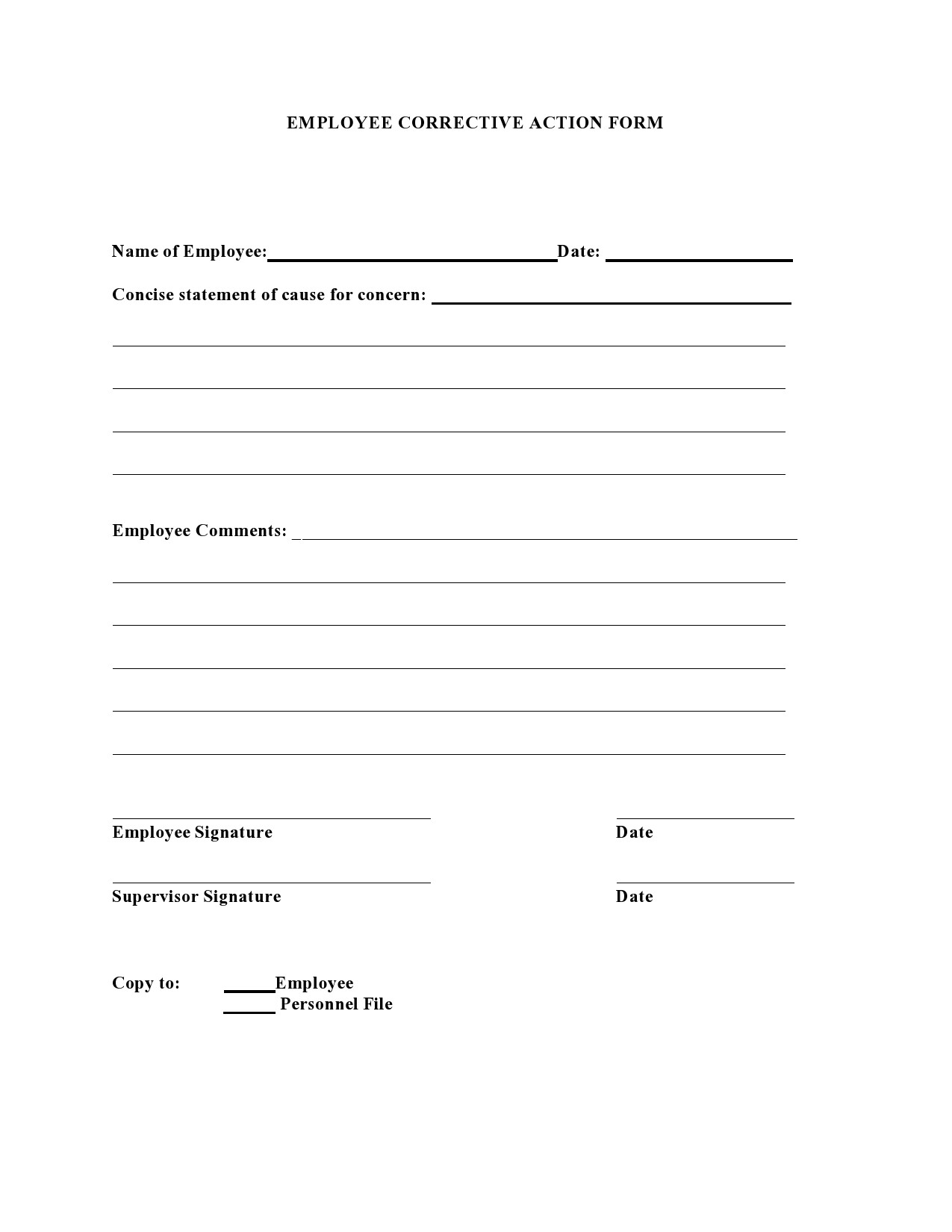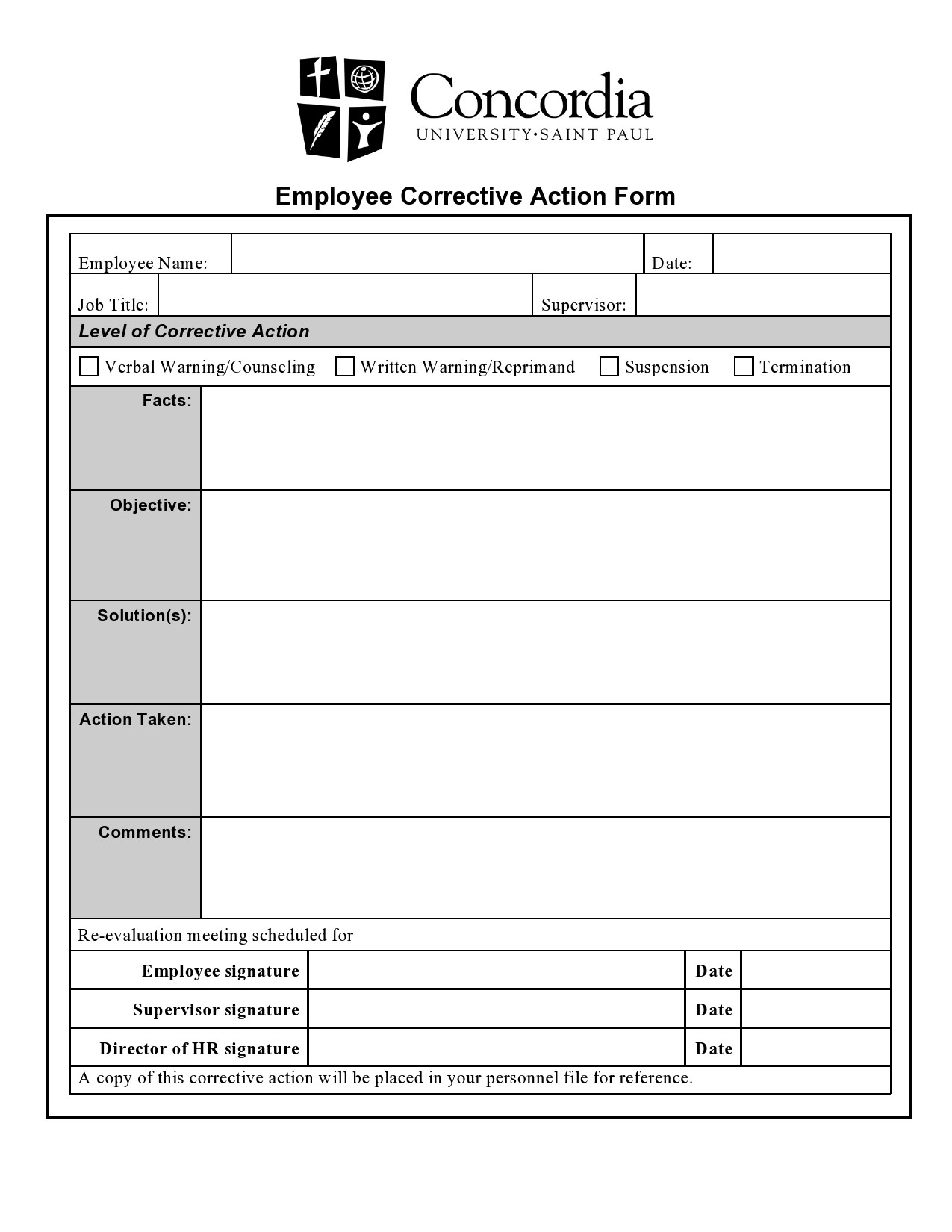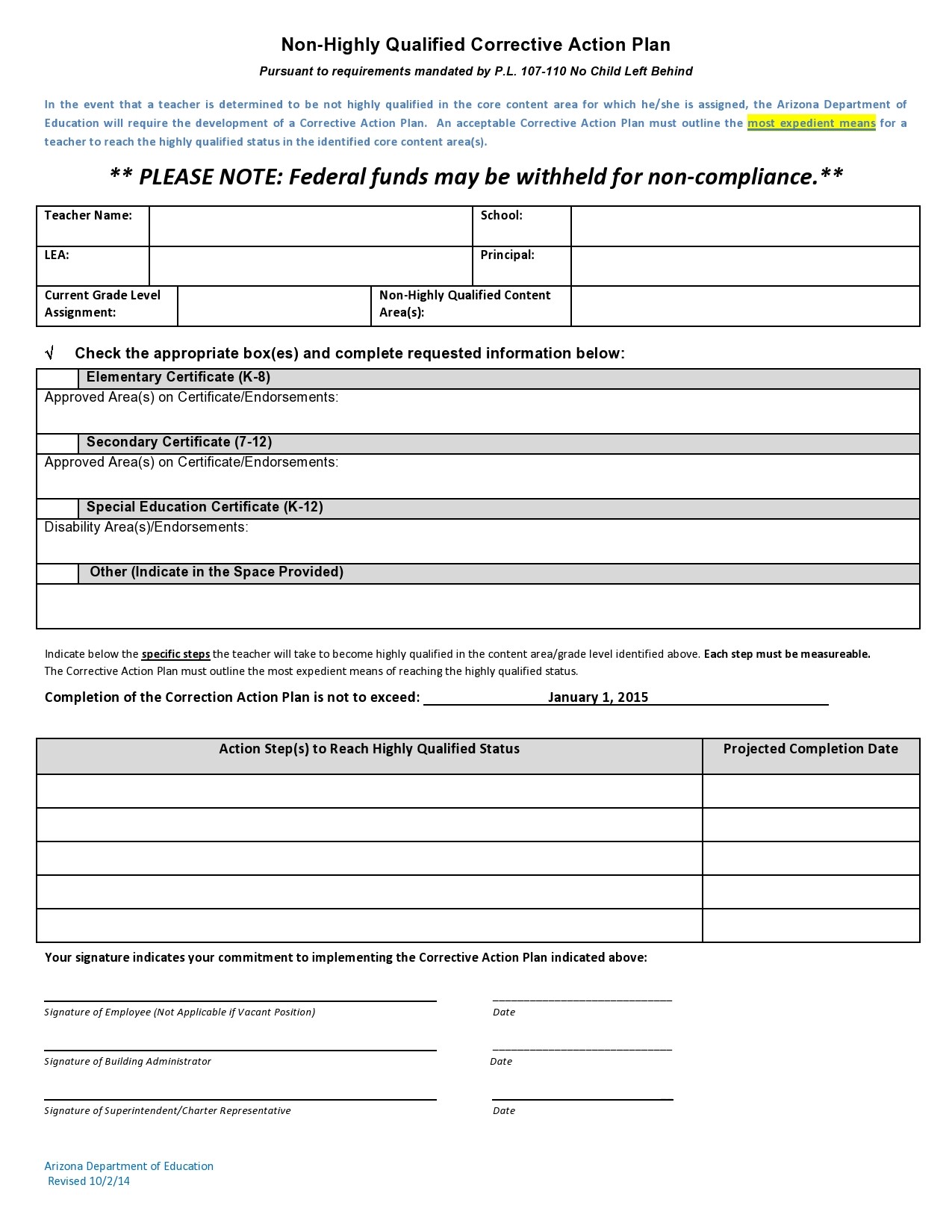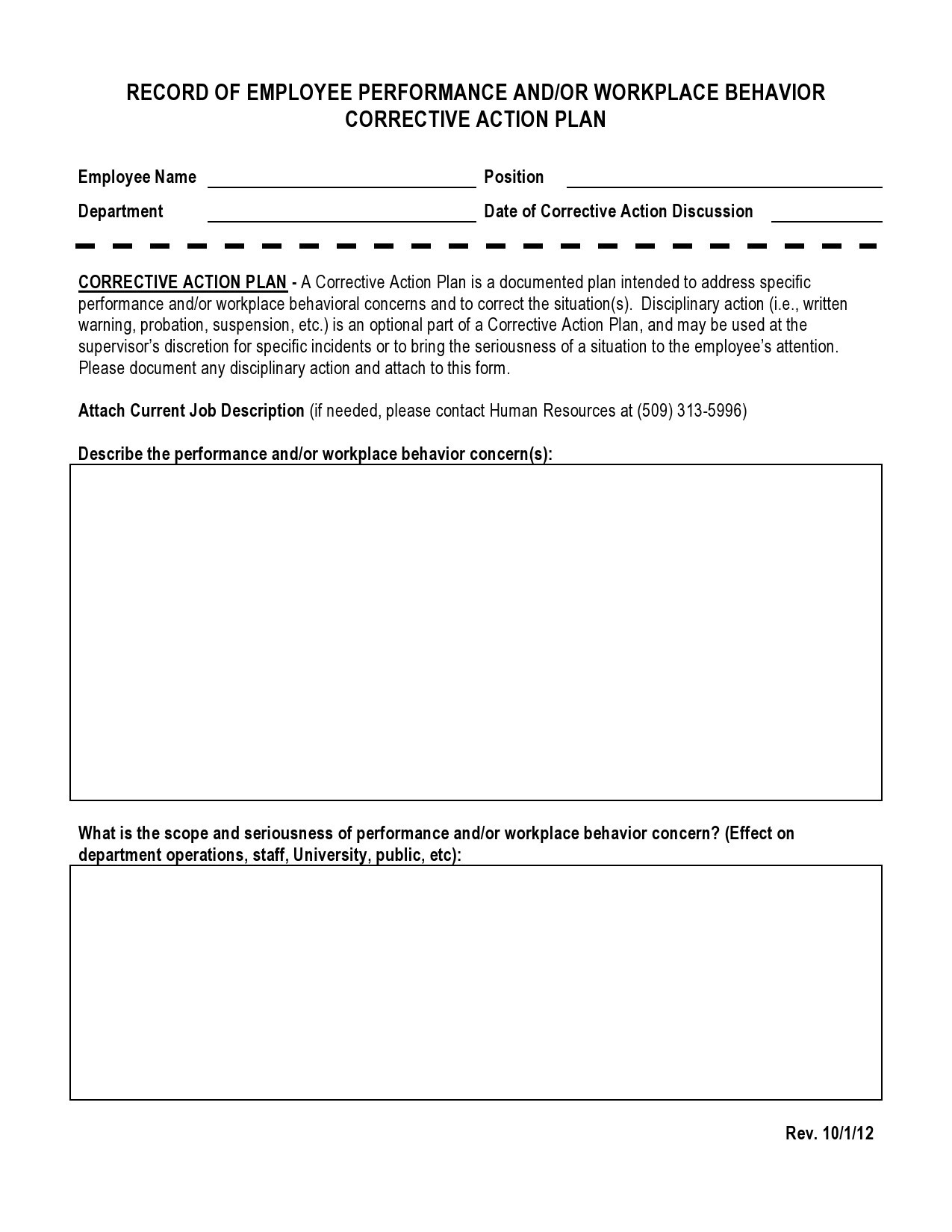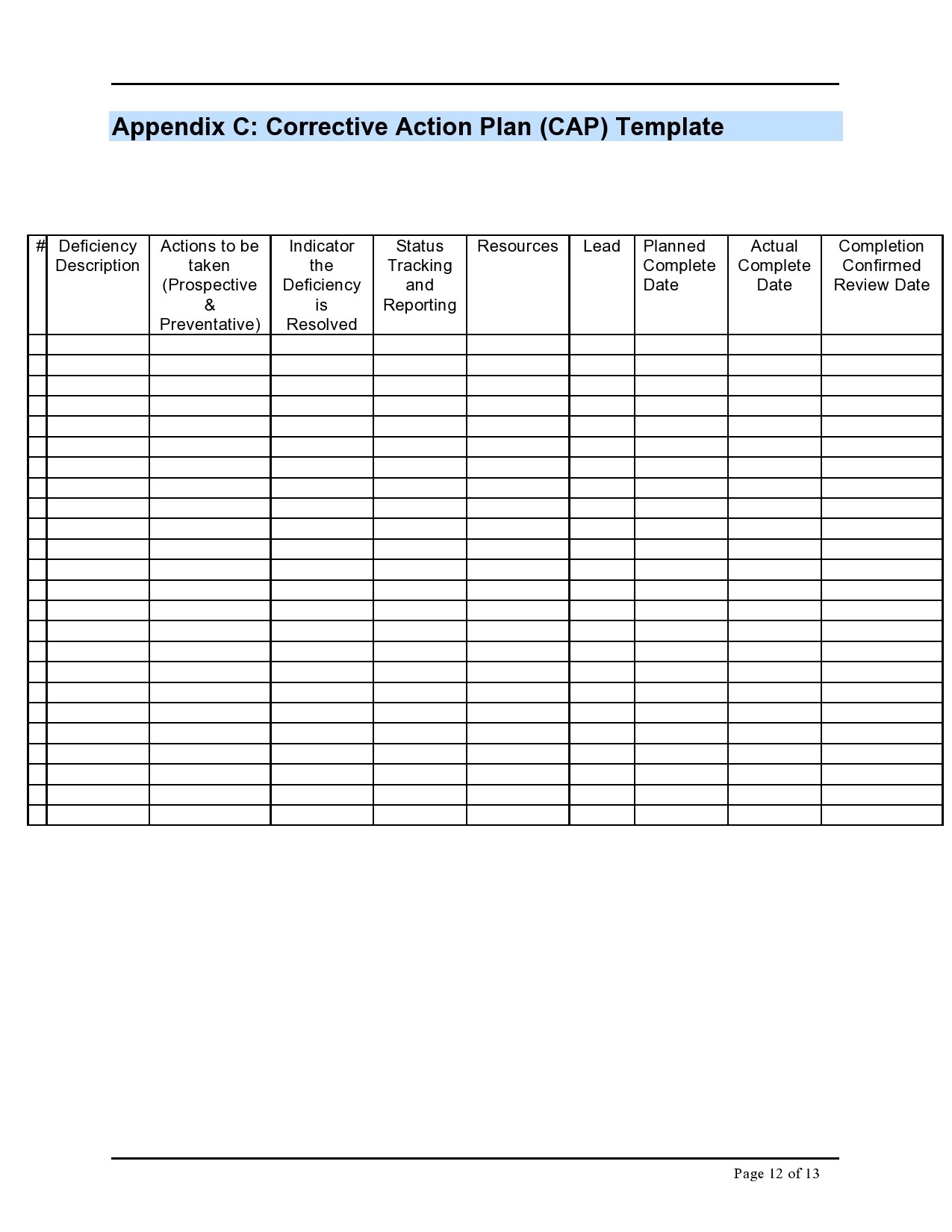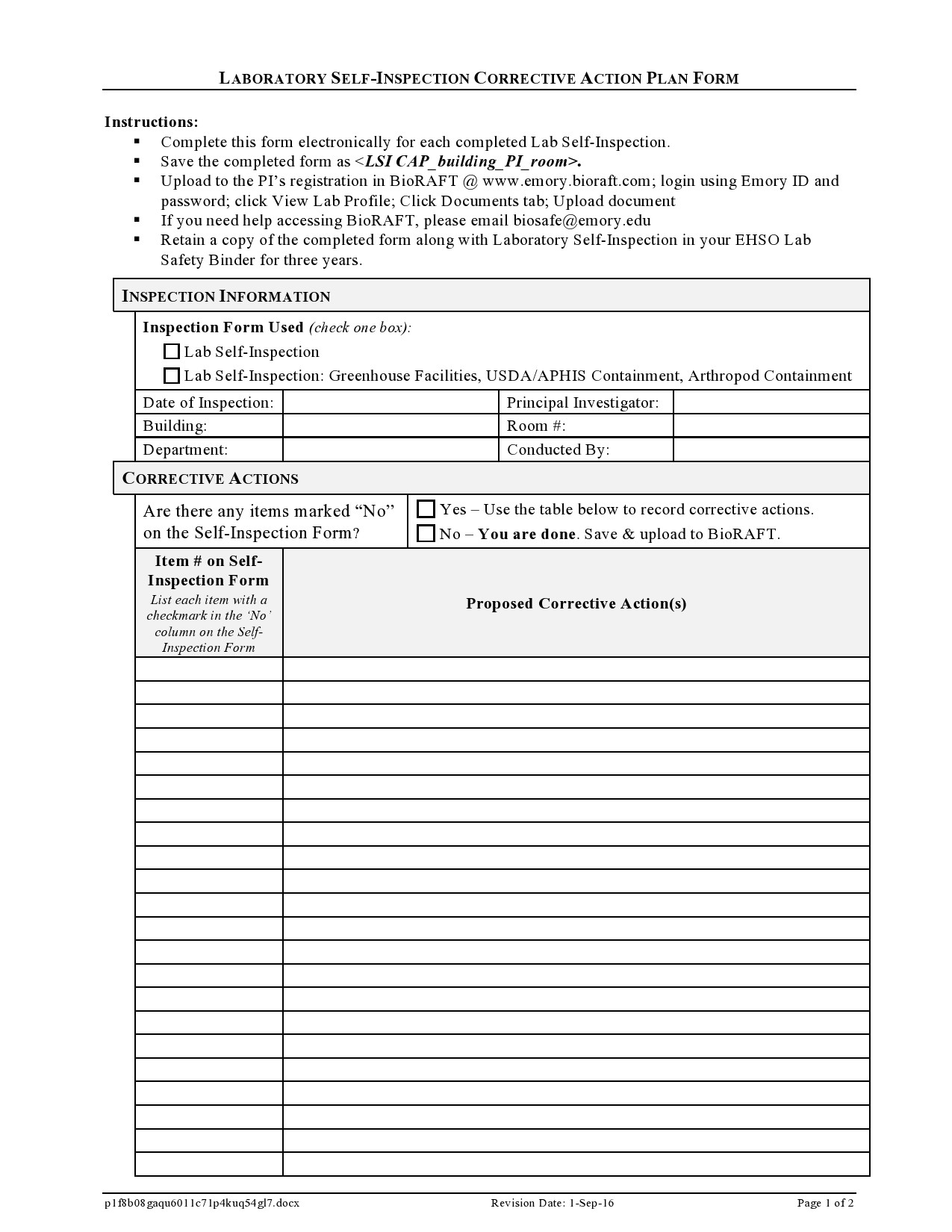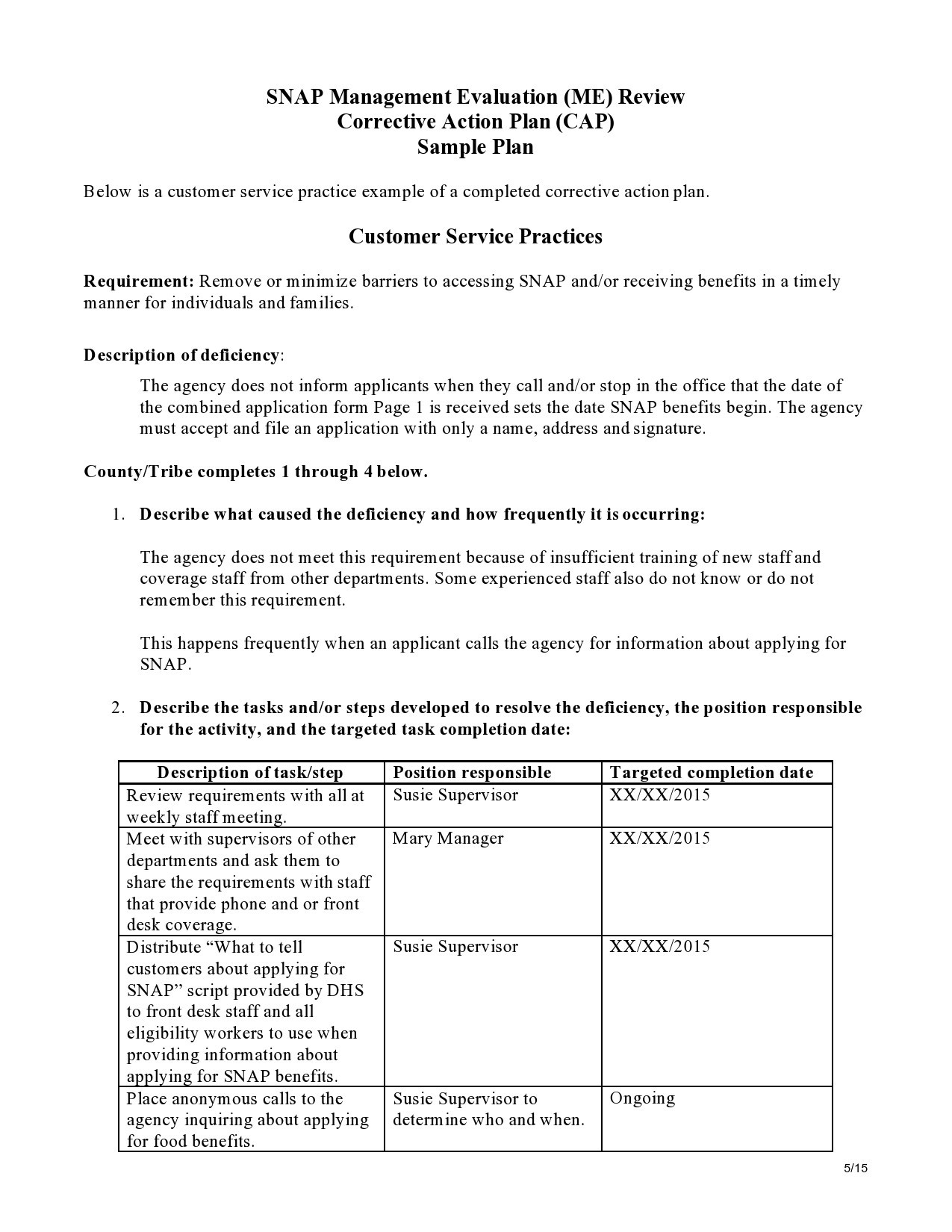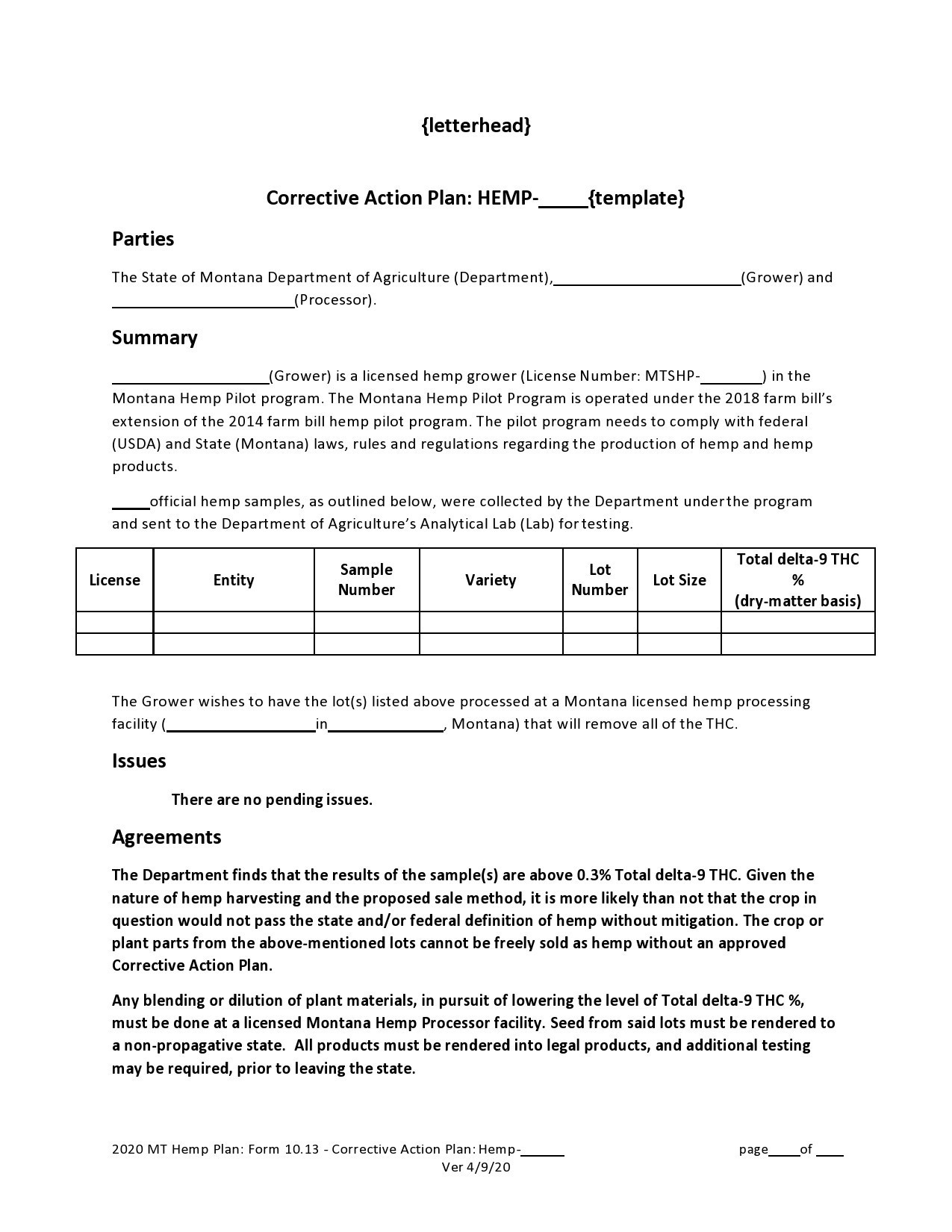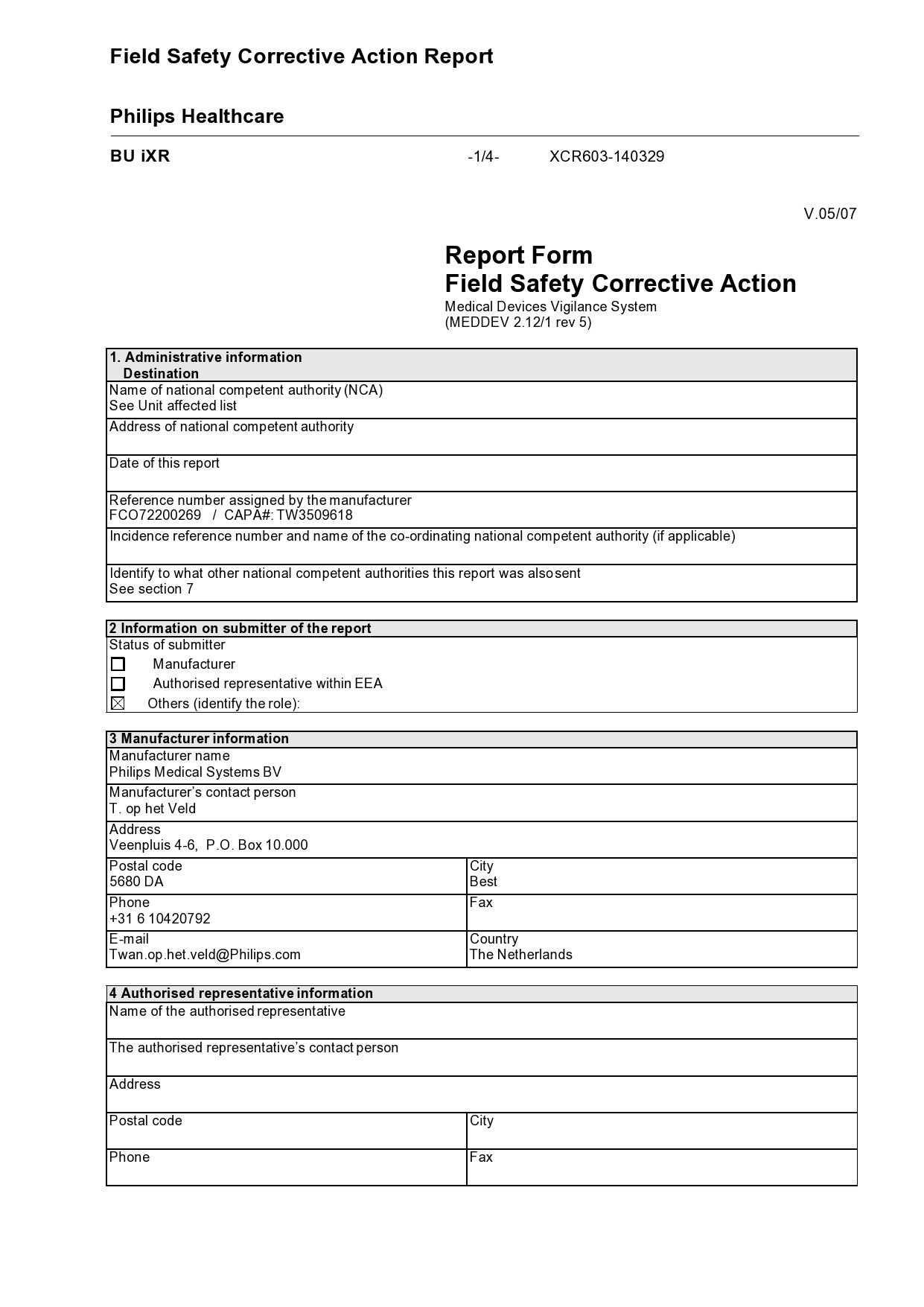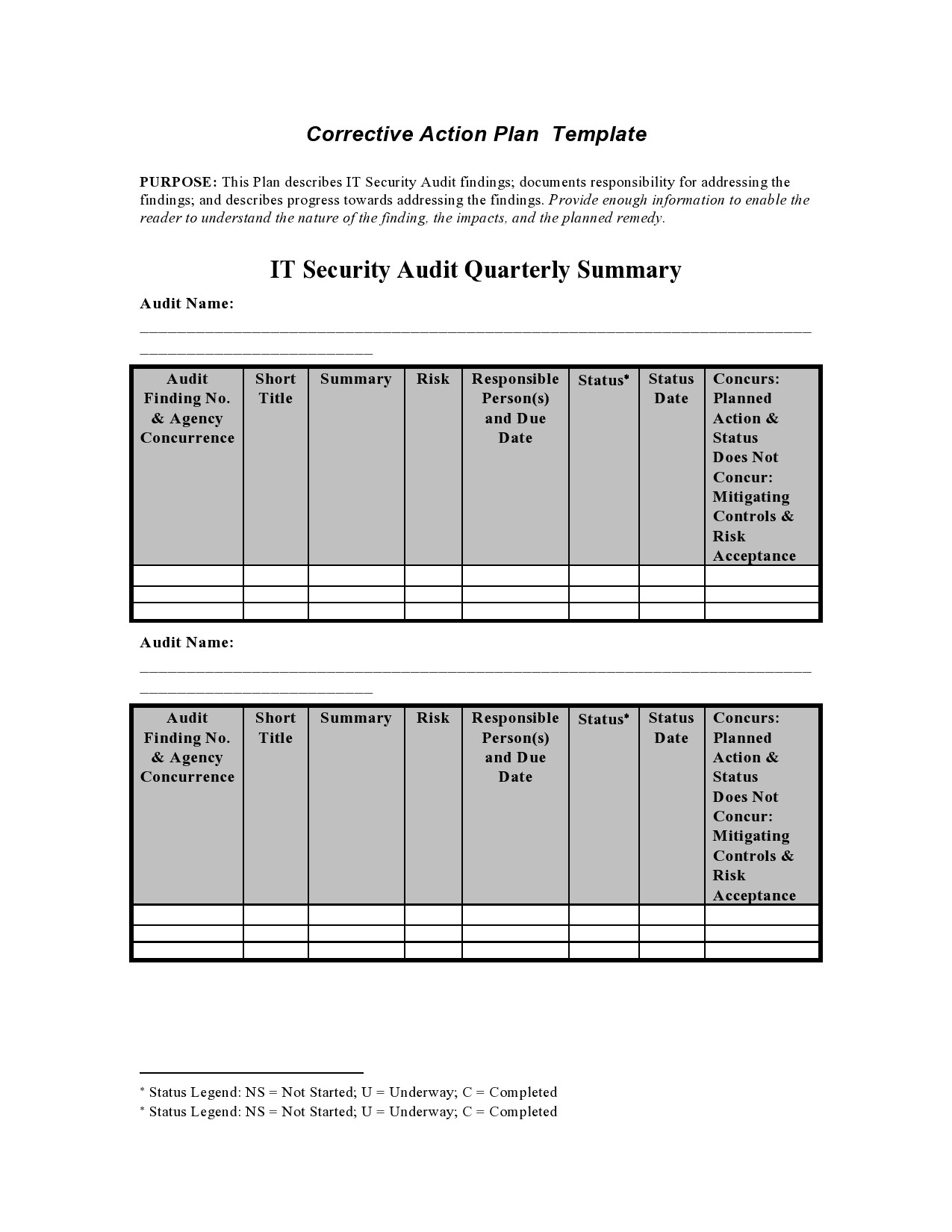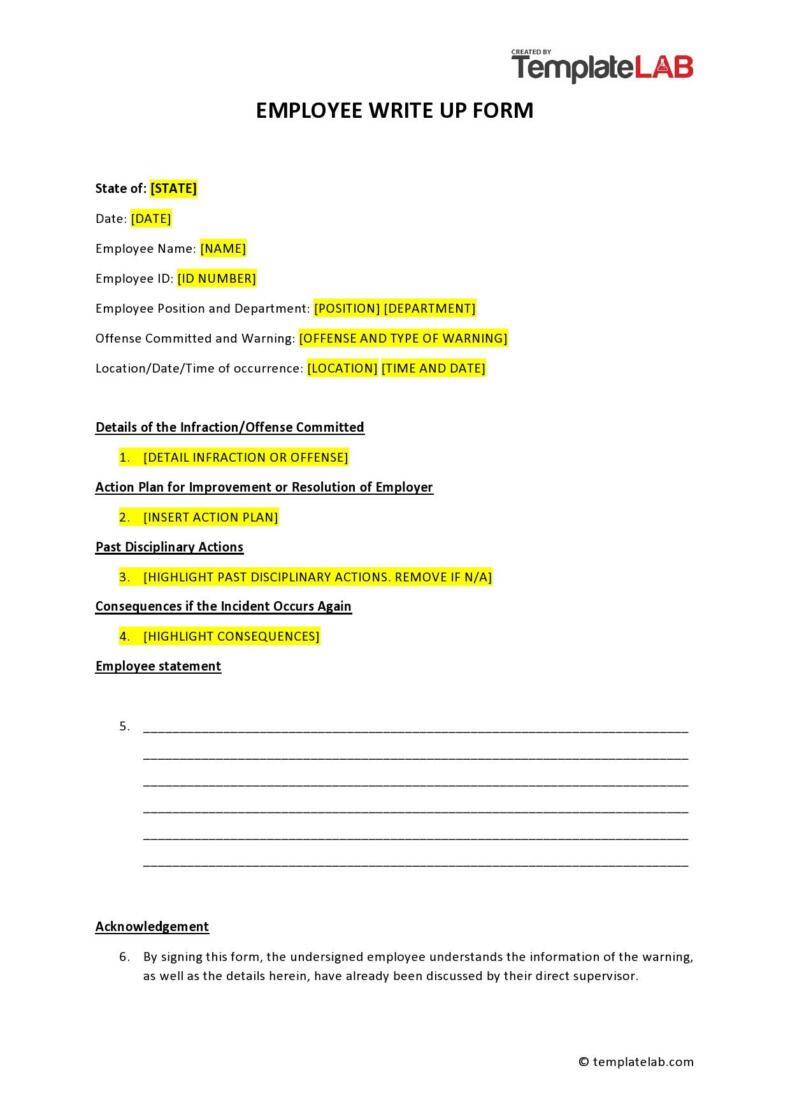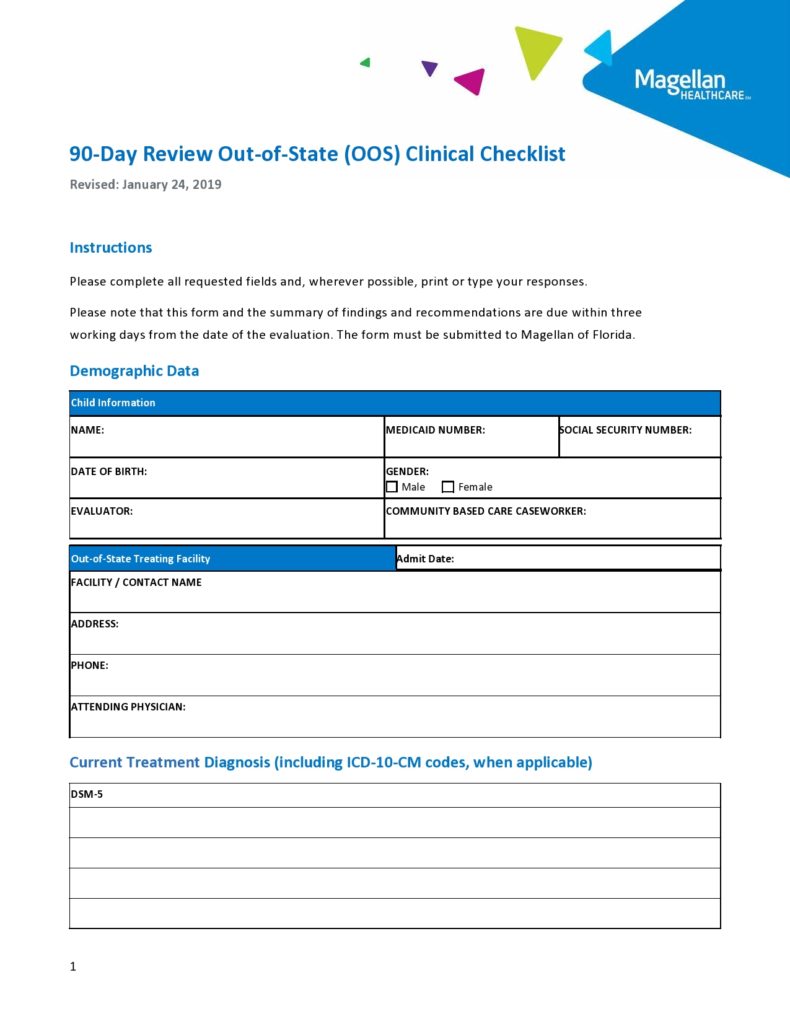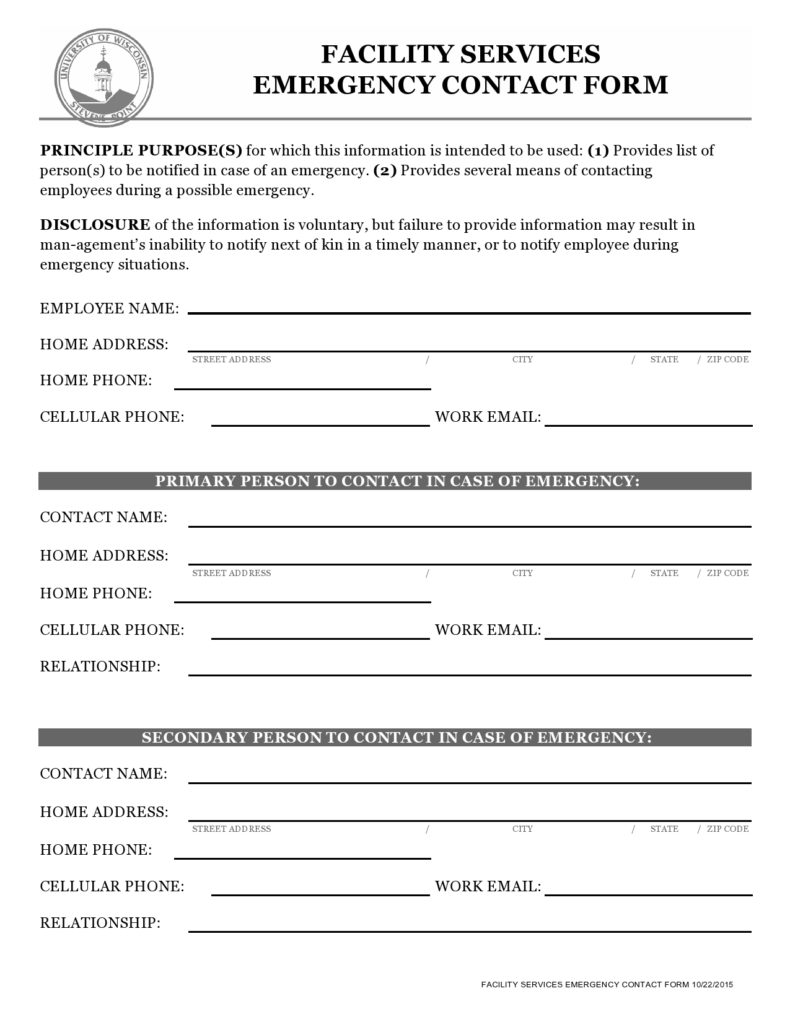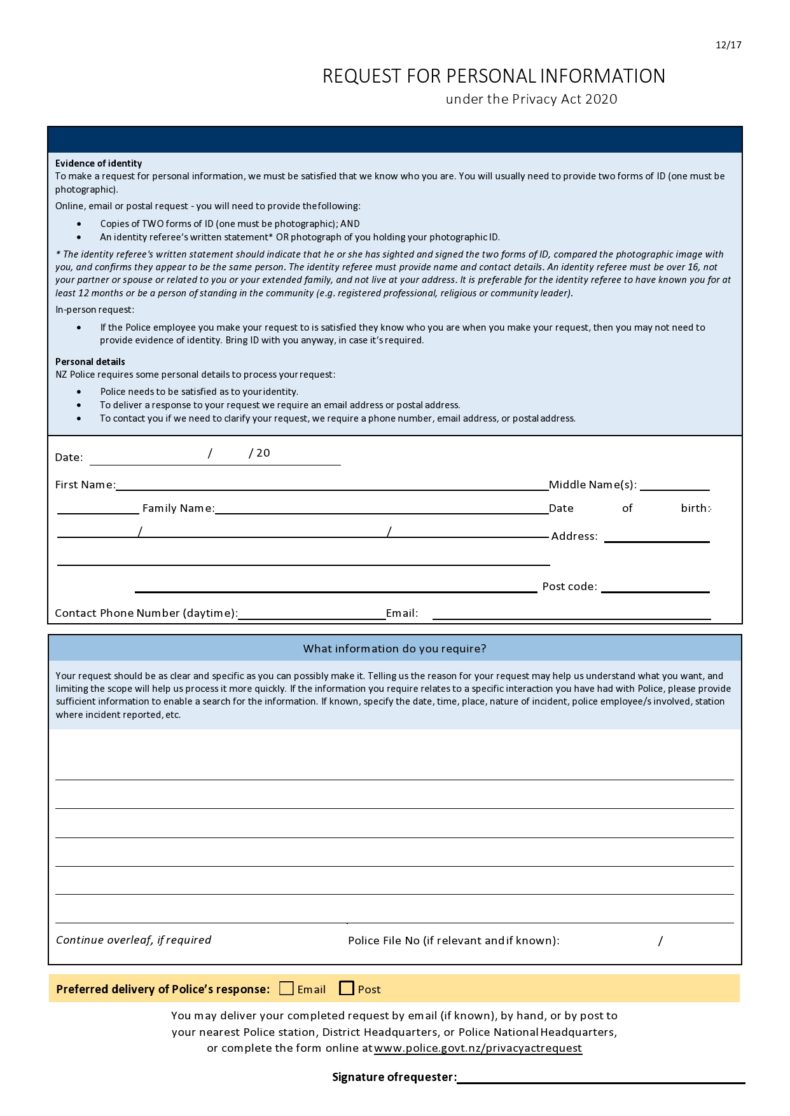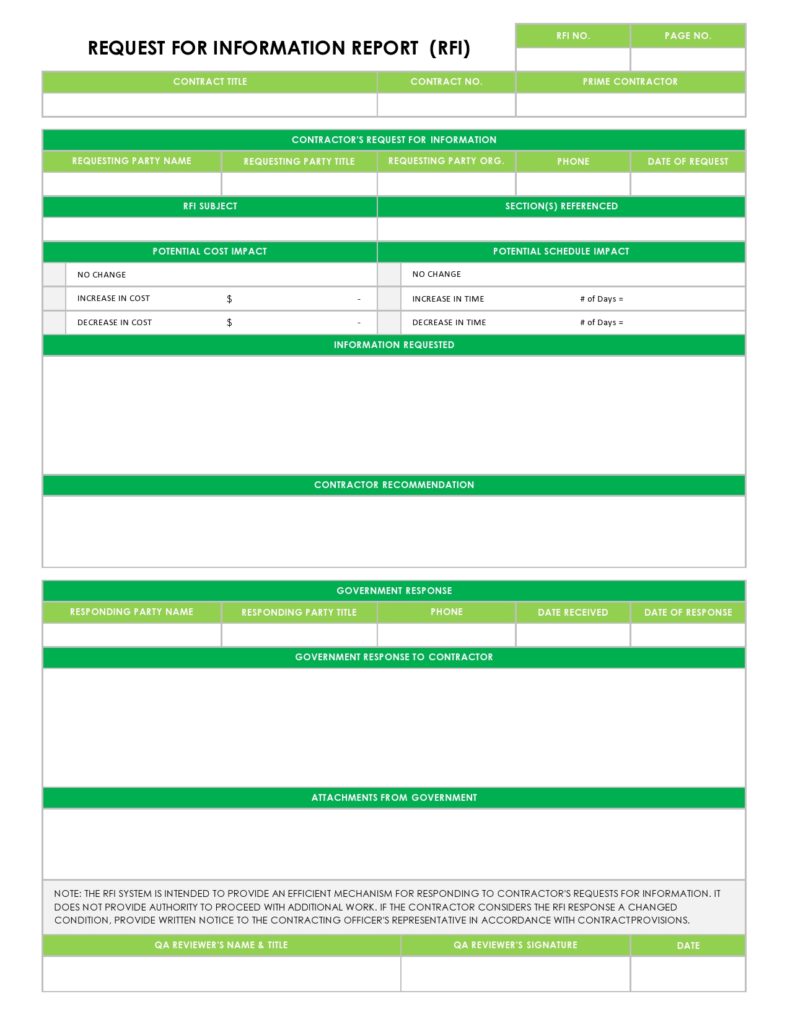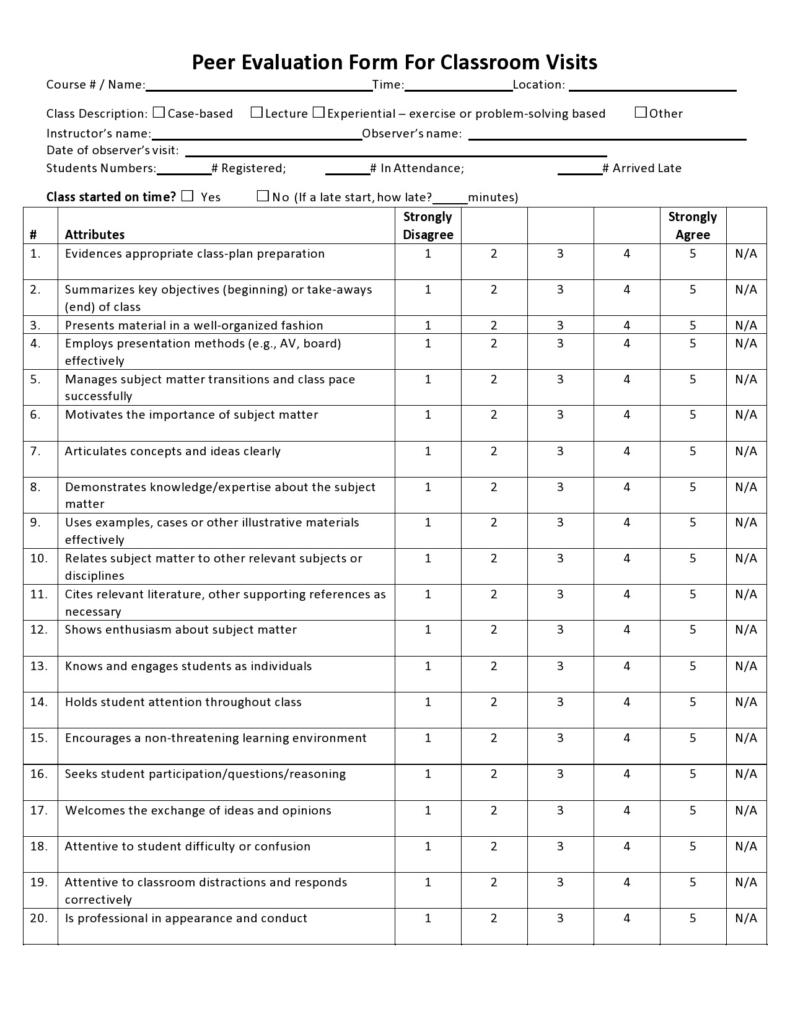As a business owner, you can use corrective actions in situations where the process starts experiencing flaws and is not in line with the intended goals. It occurs often in the work environment and you need remedial actions to prevent these behaviors from happening again. For this, you need a corrective action plan template to write down the most important details of the process and corrective actions of the situation.
Table of Contents
- 1 Corrective Action Plan Templates
- 2 What is a corrective action plan template?
- 3 Corrective Action Plan Examples
- 4 When do you need corrective action?
- 5 Corrective Action Forms
- 6 What are the key elements of a corrective action plan?
- 7 Samples Corrective Action Plan
- 8 How do you write a corrective action plan?
- 9 Corrective Action Plan Formats
- 10 Implementing your corrective action plan
Corrective Action Plan Templates
What is a corrective action plan template?
Organizations and companies use corrective action plan examples to deal with and prevent any undesirable behaviors and situations at work. With this, you can identify the untoward incidents and undesirable behaviors then deal with them in the most appropriate way.
Using a corrective action template helps you create an official document that offers guidance in the process. There are different templates you can use including product redesigns, training, and other improvements.
There are also different ways to implement corrective actions. For instance, you can implement company-wide changes then introduce them at conferences or meetings. For things that involve a single employee, the most common approach is a one-on-one meeting.
Should a corrective action fail to resolve the issue, you can take other steps. For instance, you can send written warnings to the employee. In some cases, you can suspend the employee until the issue gets resolved.
Corrective Action Plan Examples
When do you need corrective action?
You can apply corrective actions in different situations and you will apply these will depend on the department. Here are some situations where you can use a corrective action form:
- HR Application
The managers in the Human Resources Department can use a sample corrective action plan after attempting to counsel, coach, or rectify the behavior of an employee. In most HR departments, those who favor corrective action tend to view this as a disciplinary action.
But in other departments like manufacturing and production, they might take the opposite approach where they encourage the proper use of corrective action in processes as a part of the process of continual improvement. - Healthcare Application
In cases involving healthcare delivery services, a government regulatory agency might instigate the use of a corrective action plan template. Many prefer an effective corrective action plan to prevent sanction plans and audits along with legal action. - Manufacturing for Medical Products
Since pharmaceuticals and medical devices are all governed by the Food and Drug Administration, it is the responsibility of the CAPA to avoid deficiencies by removing defective products.
Corrective Action Forms
What are the key elements of a corrective action plan?
Your corrective action plan template must include:
- A standard way of dealing with deficiencies.
- A process to begin, investigate, and apply a corrective action plan.
- Clarification of contractor or team member responsibilities.
- Clear establishment of the issues that require this plan.
- Information about resources available, constraints, stakeholders, metrics for completion, due dates, and progress updates.
Samples Corrective Action Plan
How do you write a corrective action plan?
Solving issues that arises start with identifying the cause of what went wrong as the top priority. The next step is where the real work begins as you create a corrective action plan template that will fully resolve the issue. Here are the steps you can use as a guide in making your corrective action plan format:
- Link to a compliance record
Corrective actions can’t exist on their own. They are usually connected to significant areas of the compliance records to communicate the whole context of the issue. This means that you must first link each corrective action to the corresponding source. - Establish the action items
The main objective of employee corrective action examples is the formulation of action items that you will use to deal with the issue at hand. You may have to break this down into steps providing more details when necessary. This helps those involved understand what they must do. - Defined the workflow
Make sure that each of your corrective action steps passes through a number of key waypoints. The process may begin even before you have formed the plan. For instance, when someone makes a review of the initiating event and examining the root cause.
Even the execution of the plan itself may require the involvement of several individuals, which might create opportunities for the issue to fall through the cracks. Remember that a truly comprehensive corrective action process will prevent these from occurring while eliminating the back-and-forth email exchanges that wastes so much time. - Identify the responsible parties
An important part of writing this plan is the assignment of responsible parties. This might sound too obvious but there are still some ways where you can power this process up.
First, create a schedule of deliverables according to roles. This streamlines the process while creating accountability around each of the action items. Second, you should also consider what the process is in case the person doesn’t follow through. You come up with rules for who will hold the responsibility if a deliverable falls on a scheduled vacation while giving notice to a supervisor when someone drops the ball altogether. - Assess the risks
This is the last important part of any corrective action plan that works. In fact, you can also leverage a risk assessment both at the start and the end of the corrective action process.
At the start, each of the corrective action requests may include a level of criticalness to calculate risk based on the risk matrix that you have developed internally. This allows you to filter out the most high-risk problems that need immediate addressing before they start developing further issues.
You can also assess risk critically assessed before resolving the request since it would be the appropriate time whether or not the performed action can reduce the risk acceptably. Should the action not meet the requirements, then you will know it is time to return it to the start of the corrective action process.
Outside of the plan itself, it will be the reporting process that will tie everything together, thus giving you a high-level overview of the effectiveness of your plan. This enables you to see elements like, which high-risk items are already overdue, the average time to closure, and any existing bottlenecks in your process.
Corrective Action Plan Formats
Implementing your corrective action plan
After you have understood the corrective action form and its importance, it is time to focus on how to implement it for the best results. When you have your employee corrective action examples on-hand, implement it through the following steps:
- Investigate the issue
When you have created your corrective action plan template, you need to try to understand the underlying issue. Despite already having standard operating procedures or guidelines in place, there can still be some basic obstacles that make these standards and guidelines too challenging to achieve.
But when you get into the core issues, the solutions will often present themselves. As such, it becomes easier to plan, take note of, and apply your corrective action plan. - Plan your process
After you have acquired a comprehensive understanding of the issue in question, it is now the time to plan your process for improvement. For this, you need to do the following:
Examine the issue’s root cause.
Assess and evaluate the nonconformance triggers like audits, customer complaints, process specifications, and so on.
Identify any other related issues.
Determine possible solutions.
Implement your protocols for risk management.
Establish the responsibilities of those involved at various stages.
Set a realistic time period to test your plan. - Write your corrective action plan
Get a sheet of paper, a pen, and begin writing the details of your plan. Just make sure you include specific details like:
The issue you need to address.
The solution to improve or resolve the issue.
A formal documentation of your policies.
Specific procedures to address the issue.
Individual and team responsibilities. - Train the members of your team
Hold a training meeting that focuses on your corrective action plan with your team. This step might be either extremely involved or straightforward, depending on how big your plan is.
If it’s only for one individual, the training might only take a couple of hours. However, if your plan focuses on a bigger issue that affects your whole business, the training might take weeks or months.
When you plan your training, make sure to explain the process from start to finish so that your team will have the understanding, skills, confidence, and knowledge needed to comply with the plan. - Implement your plan
As soon as you have completed the training, you now need to set a date to implement your plan. Just make sure that before the date arrives, you already have a completed plan with all of the procedures, methods, and instructions in place for all of your employees. - Assess the results
During the planning process, you should have already set a date to test your plan. Regardless of the duration, if the time period has already elapsed, you need to examine the results. Think of this as just a repetition of the first step where you try to get a sense of the underlying issue. - Make adjustments to your plan
After examining the results, create a new process by making adjustments to your plan then starting over again.

